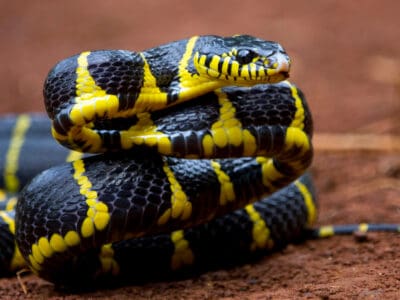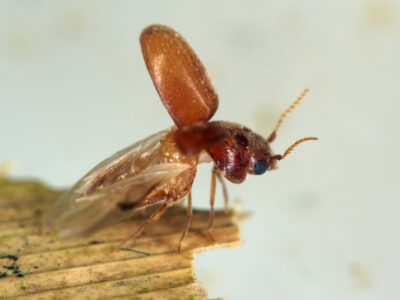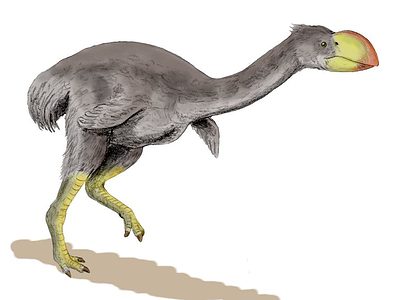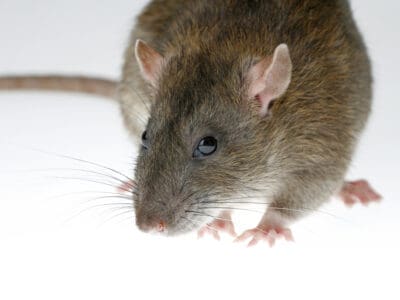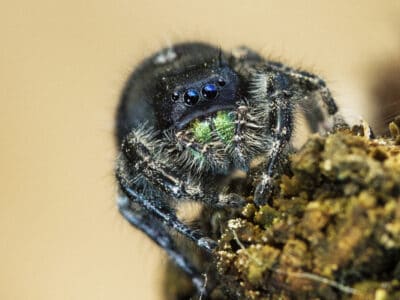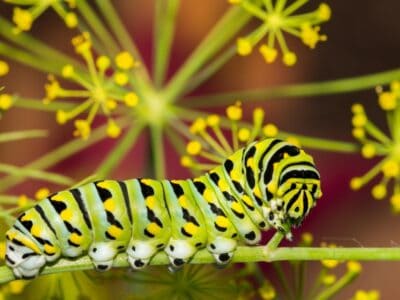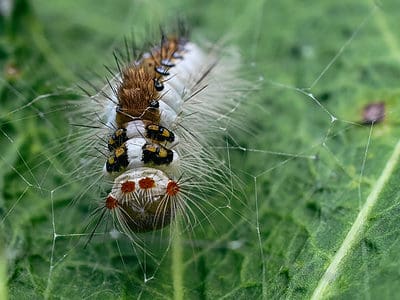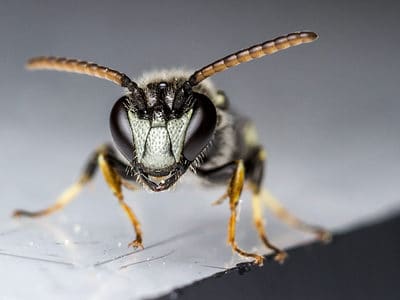Below you can find a complete list of Oceanian animals. We currently track 475 animals in Oceania and are adding more every day!
Oceania is a geographic region consisting of many large and small islands. These include Australia, New Zealand, New Guinea, Melanesia, Micronesia, Polynesia, and other islands of the Pacific.
This region is known for its unique and sometimes bizarre wildlife, as well as its dangerous animals. Keep reading to discover some of the coolest animals in the world!
Oceania Wildlife Summary
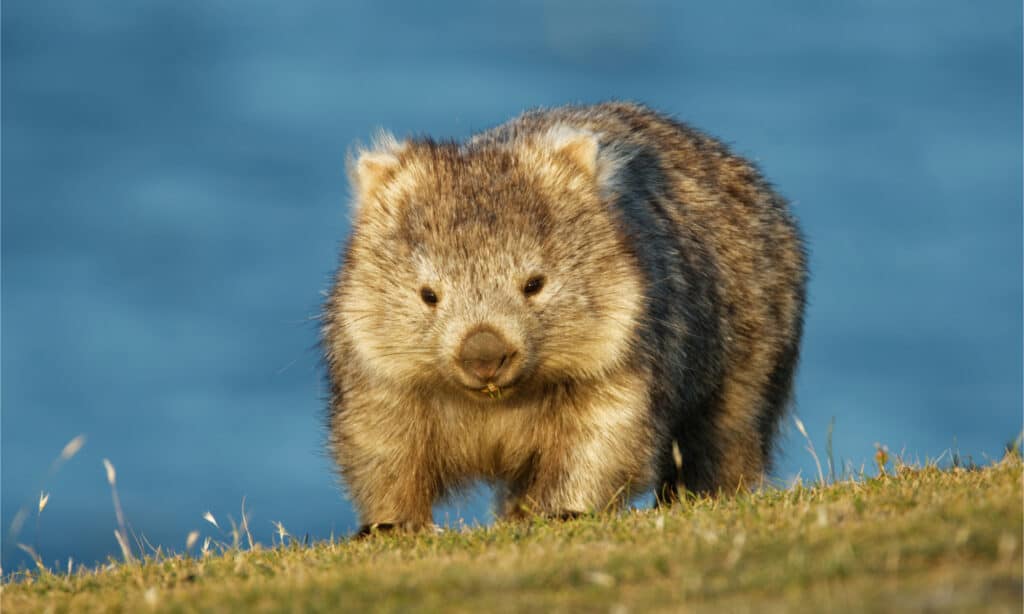
Common Wombat in the Tasmanian scenery, eating grass in the evening on the island near Tasmania in the Oceania region.
©Martin Pelanek/Shutterstock.com
Oceania is known for its unique wildlife. It has the world’s highest concentration of marsupials, animals like the kangaroo, koala, and wombat that carry their young in a pouch. Monotremes also live in this area. They are the only mammals in the world that lay eggs instead of giving birth to live young.
Tropical weather makes Oceania suitable for many parrots and other colorful birds. Some of the islands are home to birds of paradise, the males of which have bright colors, long, usual feathers, and elaborate mating dances. Flightless birds include the large emu and cassowary and the small brown kiwi.
Oceania is also home to some of the most dangerous wildlife in the world. In the oceans are sharks, poisonous fish and octopi, and jellyfish. On land are venomous snakes and spiders. The toothy saltwater crocodile inhabits both realms.
The Official National Animals of Oceania

Emus can travel great distances, and when necessary can sprint at 50 km/h (31 mph); they forage for a variety of plants and insects, but have been known to go for weeks without eating.
©iStock.com/Gilnature
Oceania is made up of many countries, each of which has its own national animals. In Australia, the national animal is the red kangaroo, and the national bird is the emu. In Indonesia, the Komodo dragon is the national animal. Indonesia’s national bird is the mythical garuda, which could be based on the kite or eagle. New Zealand’s national animal is the kiwi, and Papua New Guinea’s is the dugong.
Red kangaroos, the largest species of kangaroo, are commonly found in the open plains of inland Australia. These amazing creatures are known for their remarkable ability to survive on very little water. Males have a distinctive maroon coat with a white face and belly, while females have a bluish-gray coat and are smaller and faster than their male counterparts.
Red kangaroos are a fascinating species, and their impressive adaptations to their environment have made them an icon of Australian wildlife.
Largest Animals in the Oceania
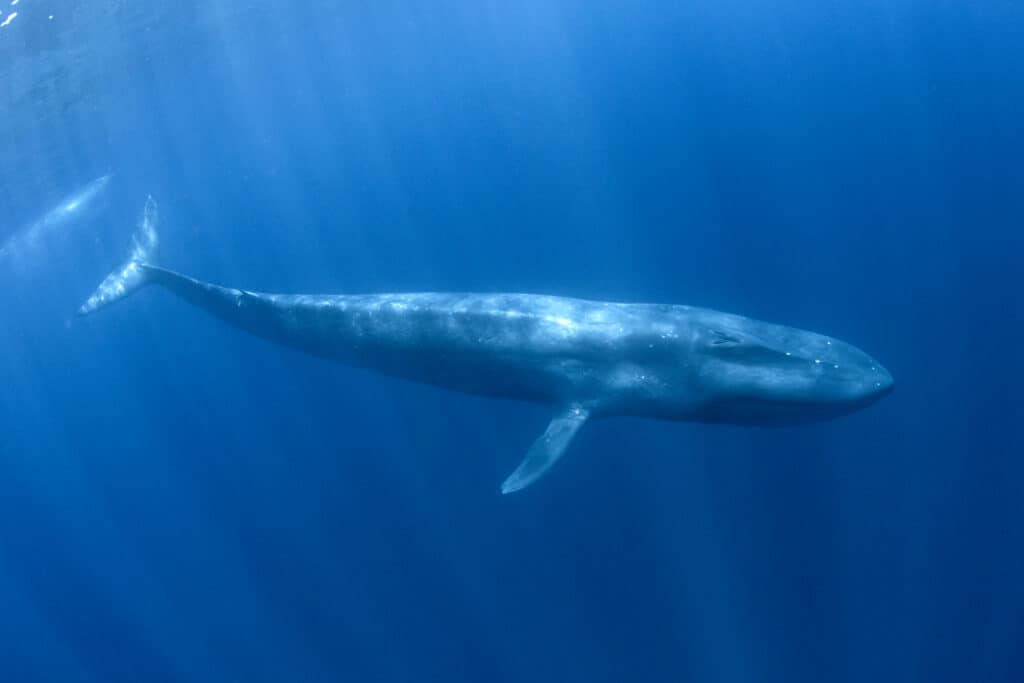
Oceania is that region is home to one of the largest populations of blue whales in the world, the blue whale.
©Rich Carey/Shutterstock.com
The vast and diverse region of Oceania is home to an incredible array of animal species, from the smallest insects to the largest marine mammals.
Here are some of the largest animals found in the Oceania region:
- Blue whale: The largest animal on earth is found in Oceania. Blue whales can reach lengths of up to 100 feet and weigh as much as 200 tons.
- Saltwater crocodile: The world’s largest living reptile is also found in Oceania. These crocodiles can grow up to 23 feet long and weigh over a ton.
- Killer whale: Also known as orcas, these marine mammals are the largest members of the dolphin family and can reach lengths of up to 32 feet and weigh up to 6 tons.
- Southern elephant seal: The largest seal in the world is found in Oceania, with males weighing up to 8,800 pounds and measuring up to 20 feet in length.
- Giant squid: This elusive deep-sea creature is found in the waters around Oceania and can reach lengths of up to 43 feet.
Rarest Animals Found in Oceania
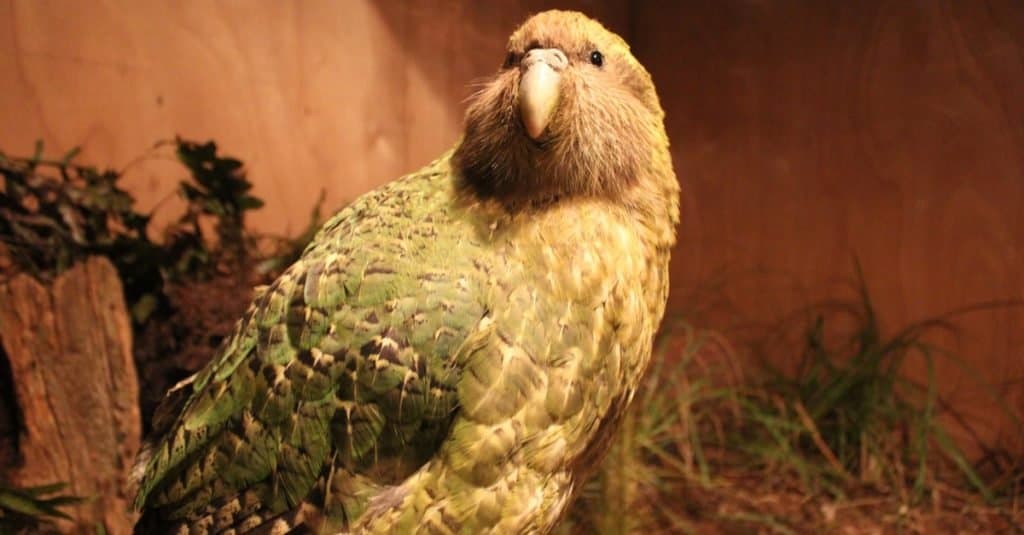
Kakapo Parrot Endemic to New Zealand is the world’s only flightless parrot. Kakapos can’t fly
©Imogen Warren/Shutterstock.com
Oceania is a vast and fascinating region that is home to a diverse range of animal species. This vast area encompasses Australia, New Zealand, Papua New Guinea, and many other small island nations, each with its unique ecological systems.
With so much land and water to explore, Oceania is home to some of the rarest animals in the world:
- Oceania is a vast region encompassing Australia, New Zealand, Papua New Guinea, and several small island nations, home to diverse animal species.
- Some of the rarest animals found in Oceania include the flightless parrot Kakapo, the reptile Tuatara, the Tasmanian devil, and the Hawaiian honeycreeper bird Palila.
- Other rare species include the giant clam, the Fiji crested iguana, the Kagu bird, and the New Caledonian giant gecko.
- The critically endangered Lord Howe Island stick insect was rediscovered in 2001, and can only be found on Lord Howe Island.
Where to Find the Top Wild Animals in Oceania
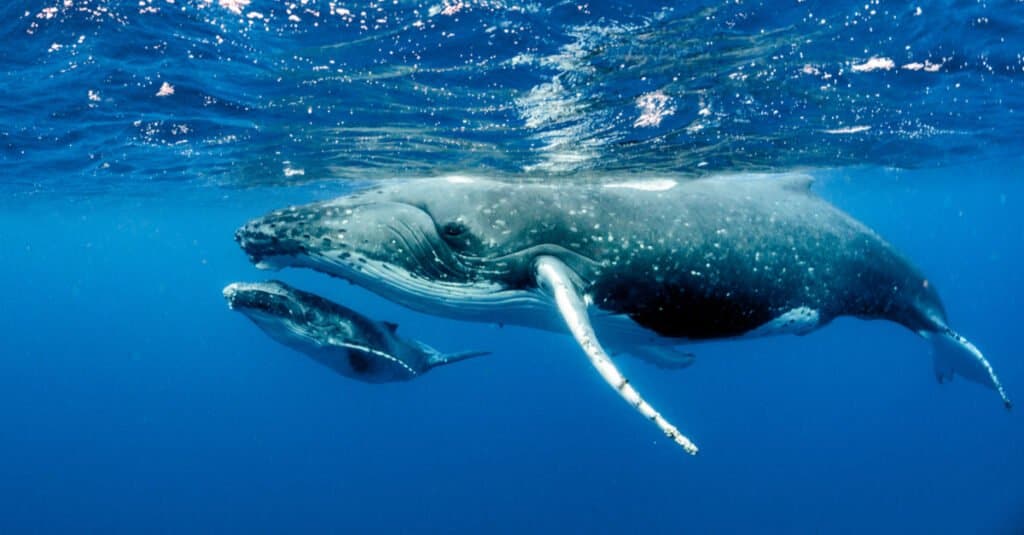
Each winter, as many as 10,000 humpback whales travel from Alaska to Hawaii. This incredible animal migration starts in November and lasts until around May. They are often seen in the Oceania region.
©Imagine Earth Photography/Shutterstock.com
One of the best things about Oceania is that you can see wildlife everywhere. In Australia, for example, grey kangaroos and wallabies commonly wander into suburban backyards. Lorikeets, cockatoos, and butcher birds may perch overhead as you dine at an outdoor cafe. At certain times of the year, you can view humpback whales from the beach. A huge huntsman spider may even run across the window of your car! In Papua New Guinea, don’t be surprised to find a gecko in your hotel room or a flock of flying foxes in the trees above.
You can also visit zoos or hiking trails to see specific animals. Australia Zoo is a popular attraction that allows you to view many species native to Australia, Oceania, and continents around the world. Oceanic species include fresh and saltwater crocodiles, wombats, dingoes, echidnas, and Tasmanian devils. You can even feed and pet grey kangaroos! Australia Zoo was famously founded by Steve Irwin, the Crocodile Hunter, and it is still operated by his wife and children.
Other fantastic zoos and wildlife parks are located throughout Oceania. In Port Moresby, Papua New Guinea, for example, there are two fine wildlife parks – the Port Moresby Nature Park and Adventure Park PNG. Wild flying fox bats roost overhead. Aviaries are filled with birds of paradise and giant Victoria-crowned pigeons. You can also view crocodiles feeding, cassowaries, and rare tree kangaroos.
The Most Dangerous Animals in Oceania Today

The spines of this species can deliver a venomous sting and live in the Oceania region.
Oceania is famous for its host of dangerous animals. In the ocean, watch out for saltwater crocodiles, great white sharks, blue-ringed octopus, stonefish, lionfish, cone shells, box jellyfish, and man-o-wars.
On land, there are venomous animals that vary depending on the location. Some include the common brown snake, tiger snake, Sydney funnel-web spider, redback spider, and jack-jumper ants.
The cassowary has been called the “world’s most dangerous bird,” and the Komodo dragon has also been responsible for human fatalities.
While many dangerous animals call Oceania home, keep in mind that wildlife attacks are still rare. When people are educated about native wildlife and potential dangers, they are usually able to keep a safe distance and live in peace with the animals.
Endangered Animals In Oceania
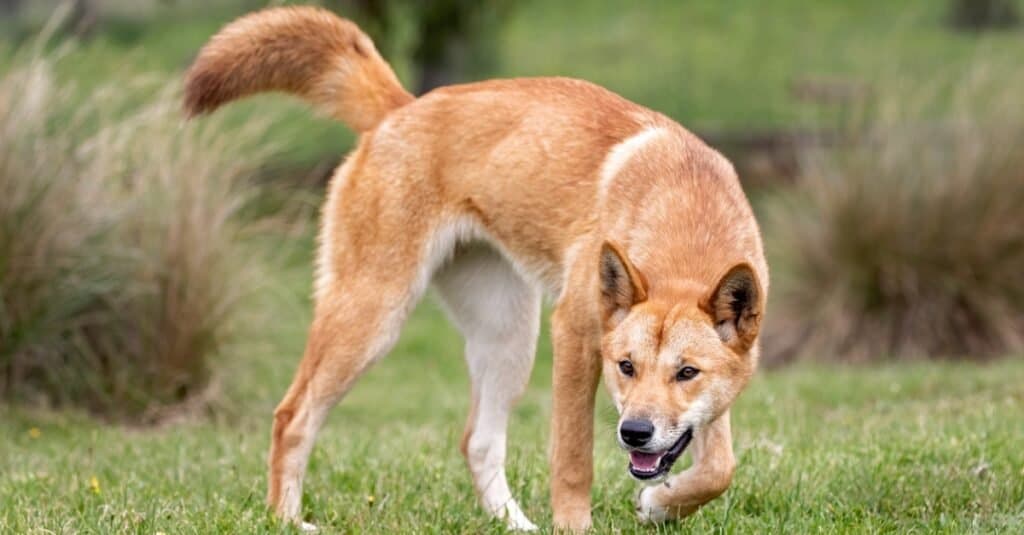
The dingo (Canis familiaris dingo, Canis familiaris, Canis dingo, or Canis lupus dingo) is a legendary dog from Australia’s prehistoric lineage.
©iStock.com/Andrew Haysom
Many Oceania animal species are endemic or native to just one or a few small islands. With limited range and habitat, these animals can easily become endangered of becoming extinct.
Tasmania, for example, is a refuge for many endangered species that once roamed Australia. This southern, heart-shaped island avoided colonization by some invasive species, such as the dingo. Without competition from feral animals, endangered Tasmanian devils, wedge-tailed eagles, and others continue to survive.
The island of New Guinea is also home to many endangered species, including rare and beautiful birds. Endangered tree kangaroos, pademelons, and the Queen Alexandra birdwing butterfly – the largest butterfly in the world – also live there.
There are also a number of famous extinct animals from Oceania. The thylacine or Tasmanian tiger is perhaps the most famous.
Other well-known extinct animals from this region include the Moa, dwarf emu, dodo bird, and numerous reptiles, bats, birds, and mollusks.
Oceanian Countries Animals Lists
Click any of the countries below to see a detailed list of animals located in that country!
Oceanian Animals
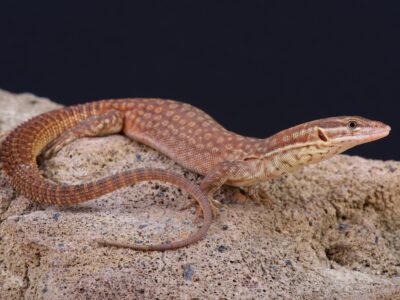
Ackie Monitor
The ackie monitor has a spiny tail which it uses as in self-defense.

Admiral Butterfly
Stunningly beautiful wings
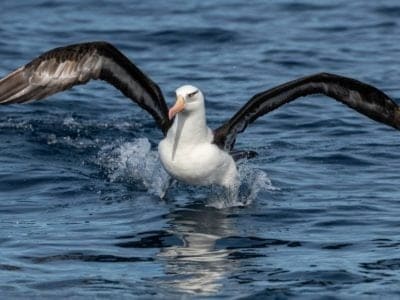
Albatross
The largest wingspan of any bird in the world!

Allosaurus
Differnt Lizard” or Allosaurus weighed around two tonnes that is almost equal to a car.
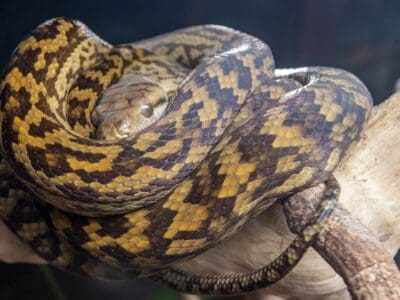
Amethystine Python (Scrub Python)
Their milky-iridescent scales have a purplish hue in the light, reminiscent of the gemstone.
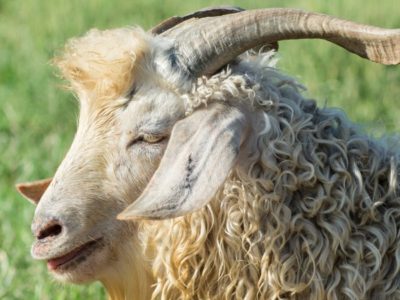
Angora Goat
Each adult Angora goat produces about 12 inches of mohair annually while kids have about 8 inches.

Ant
First evolved 100 million years ago!
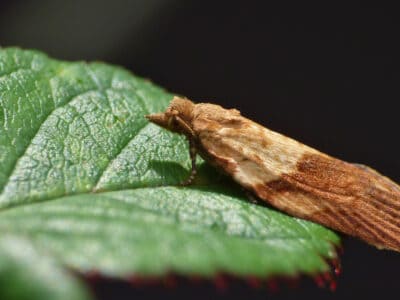
Apple Moth
In Australia the LBAM causes $21.1 million annually in lost production and control costs

Arafura File Snake
These snakes have rough, file-like skin.

Archerfish
Archerfish can shoot a stream of water up to five feet with amazing accuracy.
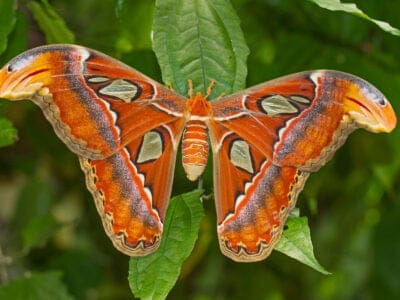
Atlas Moth
Adult atlas moths do not eat - they live off fat they stored as larvae.
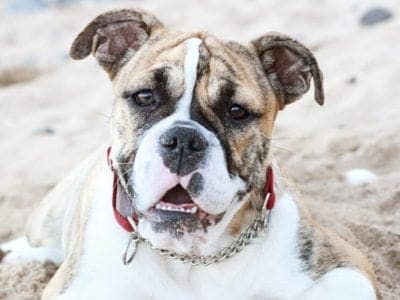
Australian Bulldog
The Aussie is a strong swimmer, a good workout in nice weather.

Australian Cattle Dog
High energy levels and active minds!
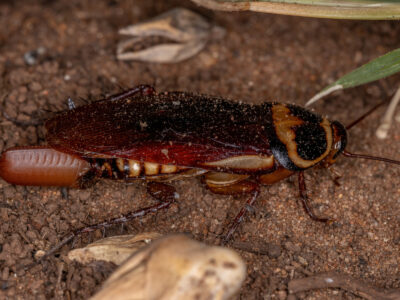
Australian Cockroach
The most common type outdoor roach in Florida
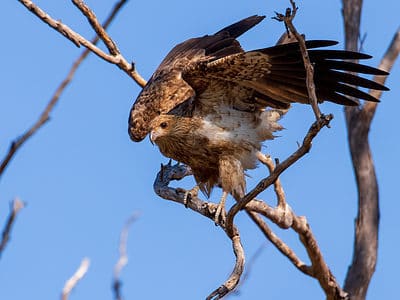
Australian Firehawk
Australian firehawks are the arsonists of the avian world!
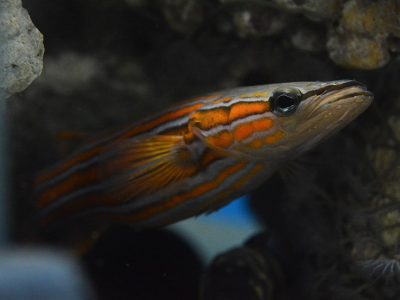
Australian Flathead Perch
This small fish fetches a high price tag, with individuals selling from $1,000 to $5,000.
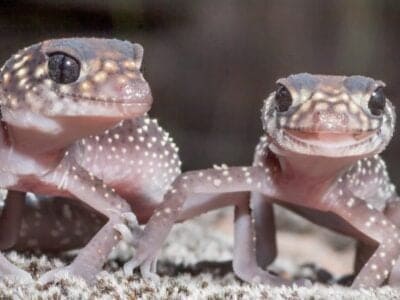
Australian Gecko
Geckos have 100 teeth and continually replace them.
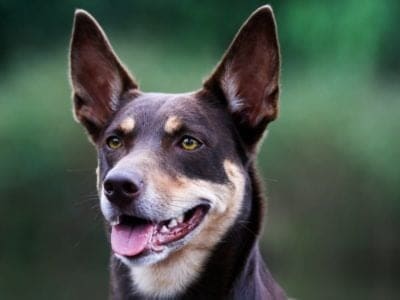
Australian Kelpie Dog
Friendly, intelligent and energetic!

Australian Labradoodle
The "Australian" just refers to where the breed originated

Australian Mist
The only cat breed to originate in Australia.
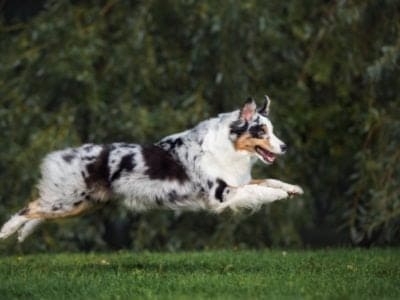
Australian Shepherd
Sweet, faithful and affectionate!

Australian Terrier
Spirited, alert and courageous!
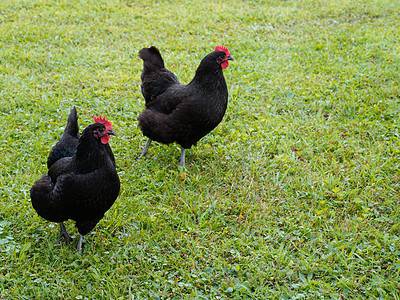
Australorp Chicken
Australorp chickens are among the best egg producers in the world, Hens in Australia set consecutive world records with one laying 364 eggs in a single year!

Avocet
Has a curved, upturned beak!
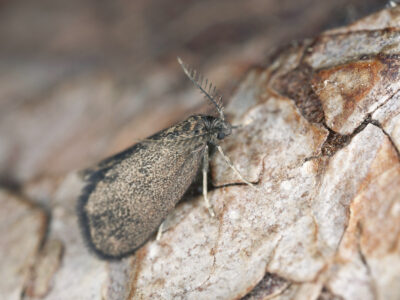
Bagworm Moth
There are approximately 1350 species in the bagworm moth family (Psychidae), which forms part of the order Lepidoptera.

Banana Spider
People spin clothing and fishing nets out of these spiders’ silk.
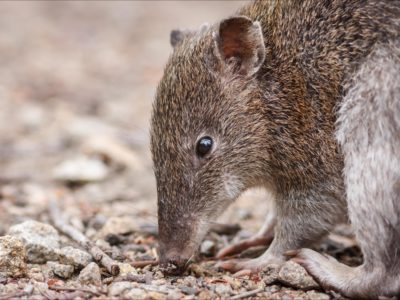
Bandicoot
Bandicoot Many species are endangered or extinct!

Bark Beetle
Not all bark beetles feed on a tree's bark. Some species feed on fruits, seeds, and other parts of the plant

Barn Owl
Found everywhere around the world!

Barn Swallow
Older offspring help care for new hatchlings.
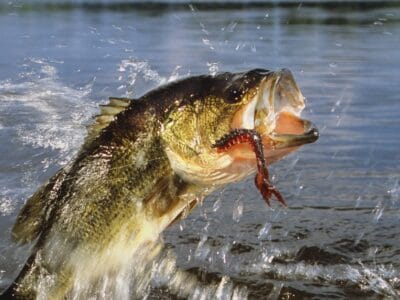
Bass
Prized by sport fishers for their size and strength

Bat
Detects prey using echolocation!

Beaglier
These dogs have great sniffer abilities
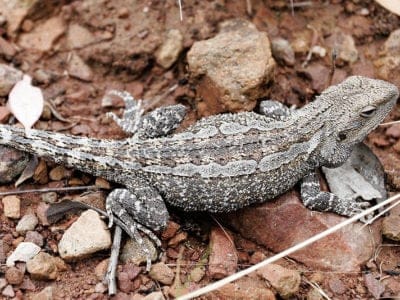
Bearded Dragon
Can grow to up 24 inches long!

Bed Bugs
Bed bugs feed for 4-12 minutes.

Bee
Rock paintings of bees date back 15,000 years

Bee-Eater
They roll around in dirt to prevent external parasites

Beetle
There are more than 350,000 different species

Bichpoo
Despite its small size, the alert nature and sharp bark of this canine make it a good watch dog.

Bilby
In Australia, the chocolate bilby replaces the chocolate bunny for Easter.

Bird
Not all birds are able to fly!

Bird Of Paradise
There are around 50 different species!

Biscuit Beetle
The biscuit beetle form a symbiotic relationship with yeast

Black Aphids
One of the most destructive pests in the world
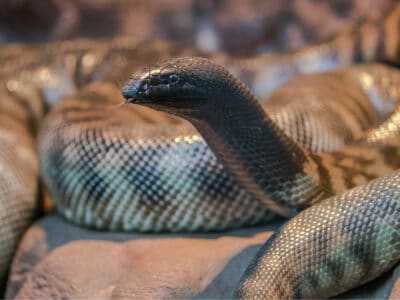
Black-headed python
Black-headed pythons gather heat with their heads while their bodies stay hidden and safe.

Black Widow Spider
They typically prey on insects!

Blacktip Reef Shark
They move in and out of mangrove swamps with the tides.
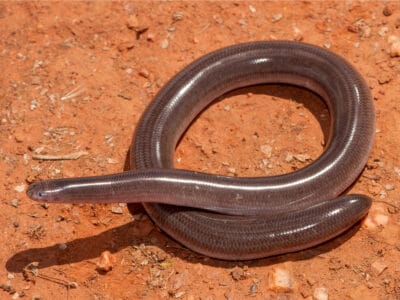
Blind Snake
The blind snake is often mistaken for a worm.
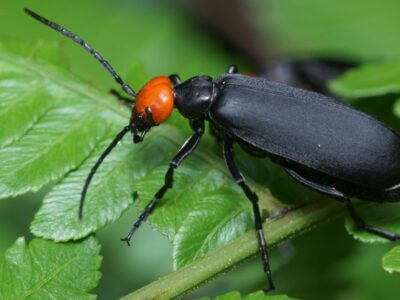
Blister Beetle
Blister beetles release a toxic fluid that causes blistering when they're threatened.
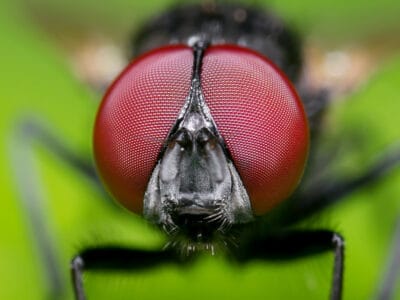
Blowfly
Can smell rotting carcasses up to one mile away
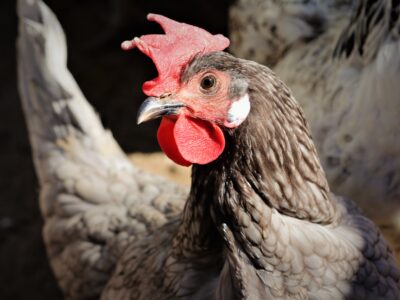
Blue Andalusian
Blue Andalusian chickens are a classic example used to teach students about genetics!

Blue Dragon Sea Slug
They inflict a painful, venomous sting
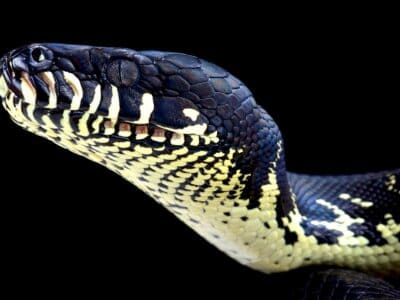
Boelen’s python
A single hatchling can go for over $5,000 as a pet.
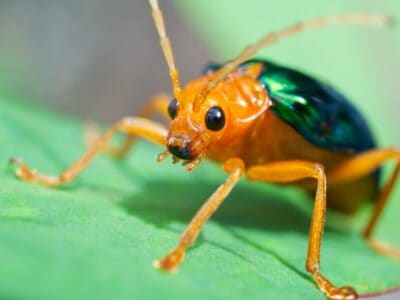
Bombardier Beetle
Spray a noxious solution from their abdomens

Box Jellyfish
Venomous marine animals
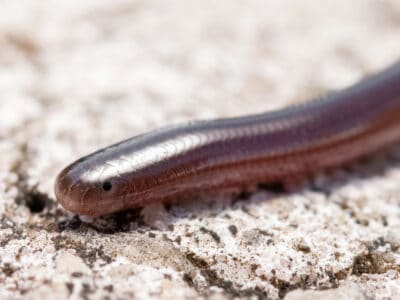
Brahminy Blindsnake
These snakes have been introduced to all continents, except Antarctica!

Brazilian Treehopper
“Mild-Mannered Minimonsters”

Bredl’s Python
These snakes love to climb trees, and young snakes often hide high in the branches.

Brown Dog Tick
Can live its entire life indoors
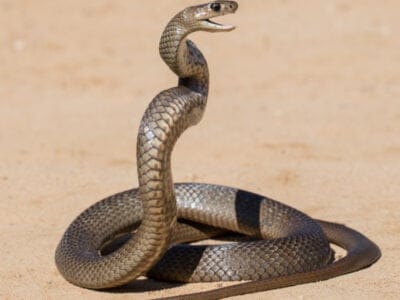
Brown Snake
Causes the most snake bite deaths in Australia!

Brown Tree Snake
People have reported seeing these snakes in Texas, Oklahoma, and Hawaii, but this has never been proven!

Budgerigar
Natively found in Australia!
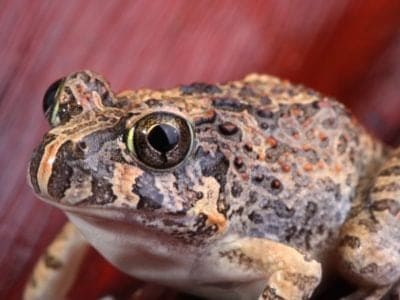
Burrowing Frog
Found close to marshes, streams and lakes!

Butterfly
There are thought to be up 17,500 species!

Cactus Moth
Cactus moths can cause serious damage to cacti in locations where they have no predators.
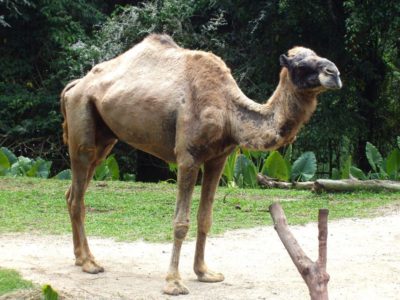
Camel
Can survive without water for 10 months!

Camel Cricket
The camel crickets that are found in the USA are light brown in color. They also have dark streaks all over their body.

Campine Chicken
Campine chickens were exported from Belgium by Julius Caesar!
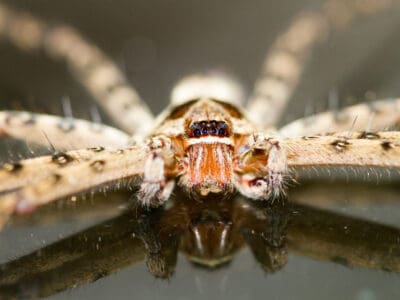
Cane Spider
Cane spiders don't spin webs to catch prey

Carpenter Ant
Carpenter ants can lift up to seven times their own weight with their teeth!
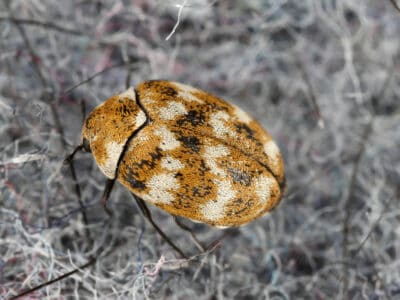
Carpet Beetle
Carpet beetles eat different animal and plant-based products, depending on what stage of their lifecycle they are in; these foods include pollen, flour, wool, and fur.
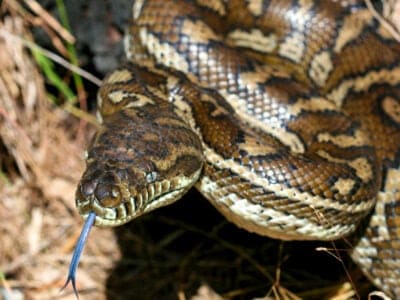
Carpet Python
Carpet pythons are popular pets because of their calm temperament.

Carrion Beetle
Carrion beetles' diets depend on the specie. Some eat decaying carcasses, while others scavenge in decaying plant matter and dung.
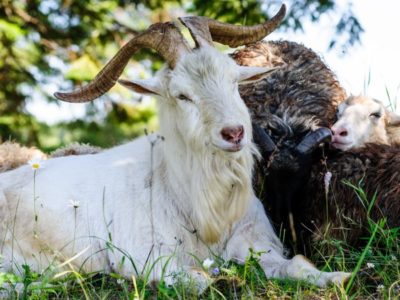
Cashmere Goat
Cashmere goat are named after Kashmir regions of India and Pakistan
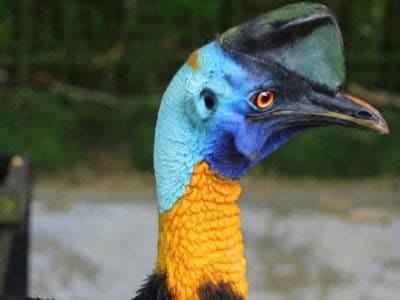
Cassowary
Can reach speeds of 30 mph!

Cat
May have been domesticated up to 10,000 years ago.

Caterpillar
The larvae of a moth or butterfly!

Catfish
There are nearly 3,000 different species!

Centipede
There are about 3,000 documented species!

Central Ranges Taipan
The central ranges taipan may be among the deadliest snakes in the world.

Chicken
First domesticated more than 10,000 years ago!

Chigger
Surviving on the skin cells of humans and animals

Children’s python
These snakes come in a wide variety of patterns and colors.

Christmas Beetle
Christmas beetles got their common name because they’re most abundant around Christmas time.

Christmas Island Red Crab
During the breeding season, roads can dangerous for cars as well as the crab. Their shells are so hard they can puncture tires.
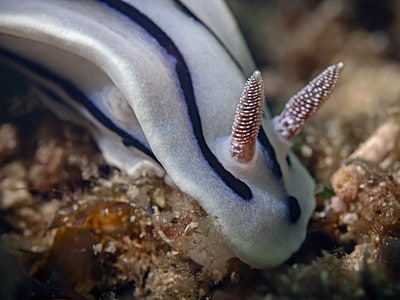
Chromodoris Willani
Their skin is toxic
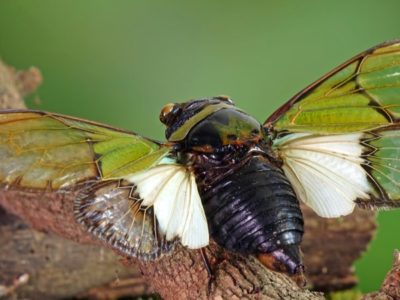
Cicada
Cicadas have one of the longest insect lifespans
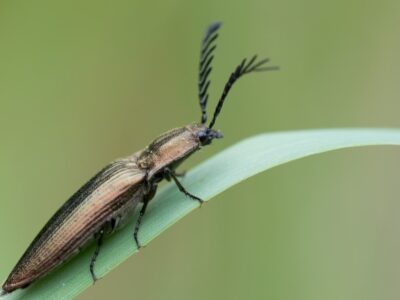
Click Beetle
Click beetles are named for the clicking noise they make to escape predators.

Clock Spider
Males make a rhythmic thrumming like a clock
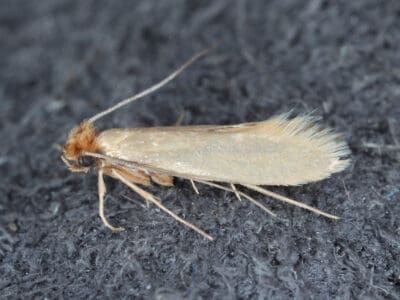
Clothes Moth
Clothes Moths can remain in the larvae stage for up to 2 years, but adults only live 10 days.
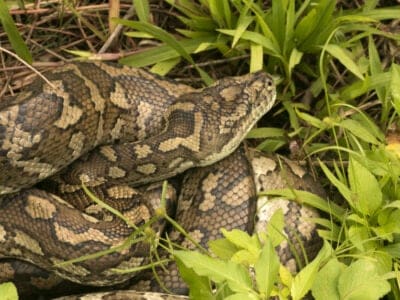
Coastal Carpet Python
This subspecies can reach 13 feet, but usually tops out at 9 or 10.
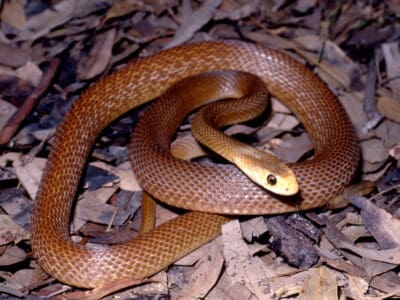
Coastal Taipan
The venom in its bite starts to have adverse effects on a human within 30 minutes

Cochin Chicken
Cochin chickens gifted to Queen Victoria started a craze that lasted more than a decade!
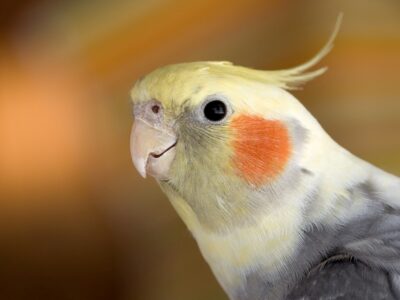
Cockatiel
They have crests that rise or fall depending on their emotions
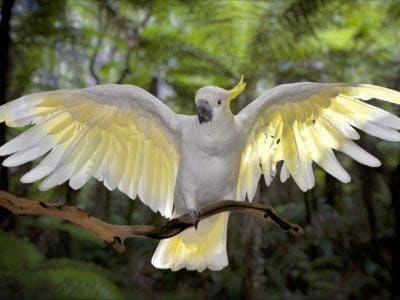
Cockatoo
Highly social, smart, and chatty bird.

Cockroach
Dated to be around 300 million years old!

Coconut Crab
The largest terrestrial arthropod in the world

Codling Moth
Pupae are able to undergo diapause to survive poor fruit yield years and winter.

Collett’s Snake
Collett’s snake is beautiful but almost as dangerous as a mulga snake.
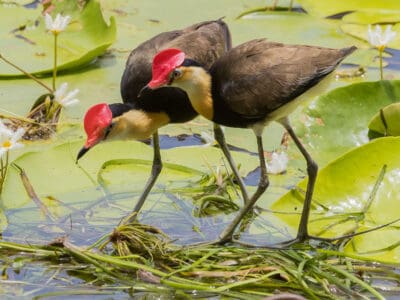
Comb-crested Jacana
They are busy foragers, always on the move

Common Furniture Beetle
The common furniture beetle feeds exclusively on wood

Common House Spider
House spiders have the ability to eat most insects in a home.
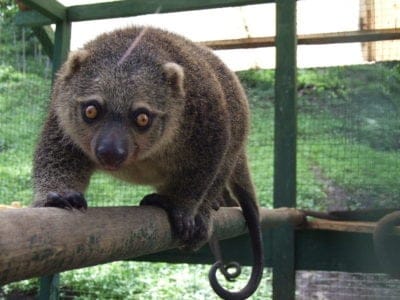
Common Spotted Cuscus
Has a long, strong prehensile tail!

Cone Snail
Beautiful, but deadly!

Coral Snake
There are over 80 species of coral snake worldwide.
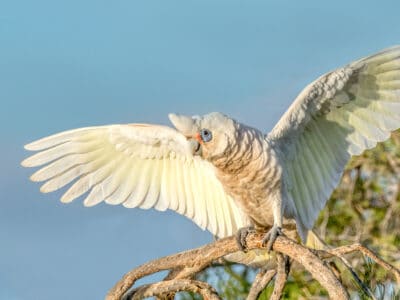
Corella
Corella birds are noisy, especially during the early morning or late evening.

Cormorant
They can fly 35 mph and dive 150 feet below water.
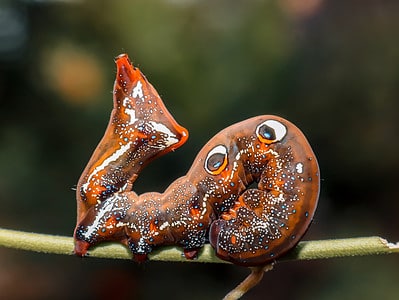
Cosmic Caterpillar
Cosmic caterpillars have spots on their back that look like eyes to scare off predators.

Cow
There are nearly 1.5 billion worldwide!

Crab
There are 93 different crab groups

Crab Spider
Crab Spiders can mimic ants or bird droppings

Crane
Many are critically endangered species!
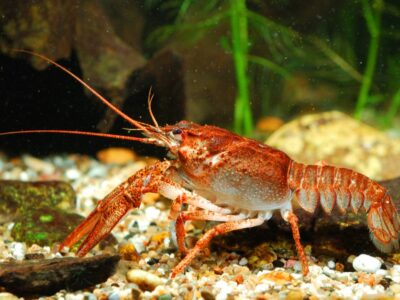
Crayfish
Female crayfish aren't that maternal; they have to secrete a form of pheromone, referred to as maternal pheromones, that encourages them to take care of their offspring and prevents them from eating their young.
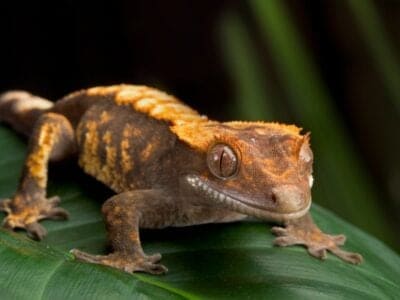
Crested Gecko
The crested gecko can walk on glass and even has a prehensile tail.
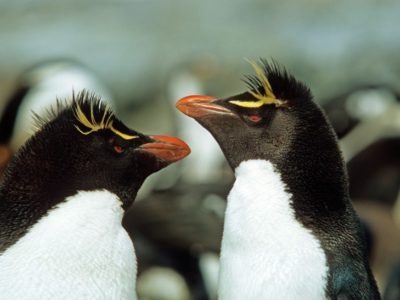
Crested Penguin
Has long yellow eyebrows!

Cricket
Male crickets can produce sounds by rubbing their wings together

Crocodile
Have changed little in 200 million years!

Crocodile Monitor
Its tail is twice the length of its body.

Crocodylomorph
Crocodylomorphs include extinct ancient species as well as 26 living species today.

Crow
A group of these birds is called a Murder.
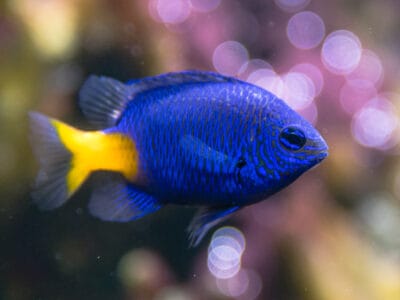
Damselfish
Damselfish belong to the family Pomacentridae

Darkling Beetle
Darkling Beetles have segmented antennae. Each one is divided into eleven segments.

Death Adder
The Death Adder is more closely related to the Cobra than other Australian snakes.
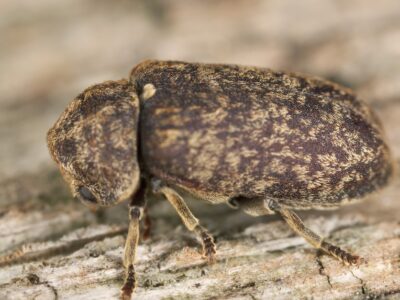
Deathwatch Beetle
The adult deathwatch beetle taps on the wood to find a mate.

Diamond Python
These pythons live at higher altitudes and further south than any other python species.

Diamondback Moth
Adult males make high amplitude boing noise to attract females

Dingo
Natively found on the Australian continent!
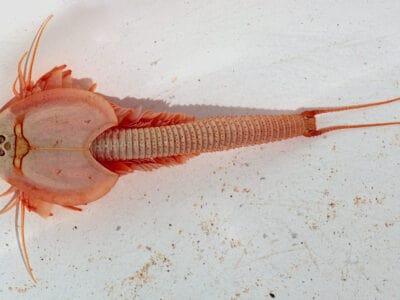
Dinosaur Shrimp
These "shrimp" evolved to survive very harsh climates, which is one reason they have been able to live so long.
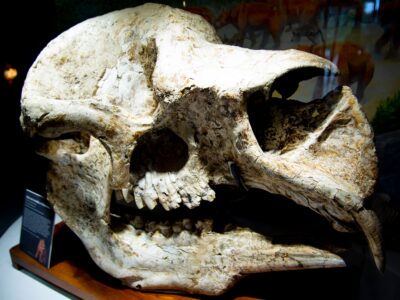
Diprotodon
Diprotodon was the largest marsupial that ever lived.

Dobsonfly
The dobsonfly spends up three years as a larva, and only a week as an adult.

Dog
First domesticated in South-East Asia!

Dog Tick
Dog ticks feed on dogs and other mammals

Donkey
First domesticated 5,000 years ago!

Dragonfly
It's larvae are carnivorous!

Duck
Rows of tiny plates line their teeth!

Dung Beetle
The dung beetle can push objects many times its own weight
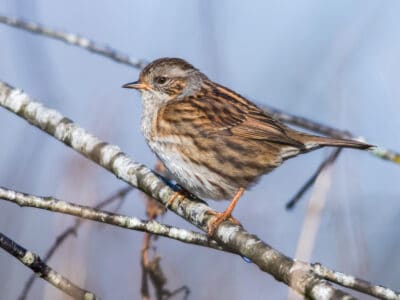
Dunnock
Both male and female dunnocks can have multiple mates every breeding season
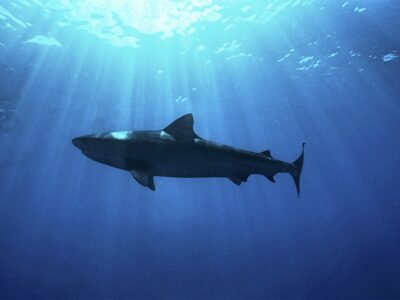
Dusky Shark
The Dusky Shark sometimes eats trash discarded by humans.

Earthworm
They are hermaphrodites, which means they have male and female organs

Earwig
There are nearly 2,000 different species!

Eastern Barred Bandicoot
Digs funnel-shaped holes in search of insects

Eastern Tiger Snake
More than 10 percent of eastern tiger snakes are blind in at least one eye.
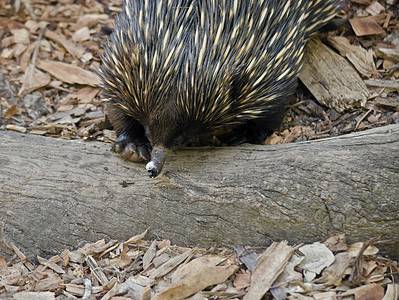
Echidna
Also known as the Spiny Anteater!

Eclectus Parrot
Does not squawk like other parrot species.

Eel
Eels can be a mere few inches long to 13 feet!
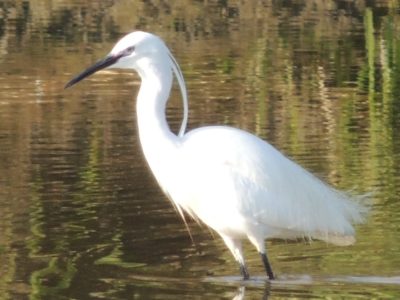
Egret
Most species are relatively vocal, making harsh croaking sounds and squeals.
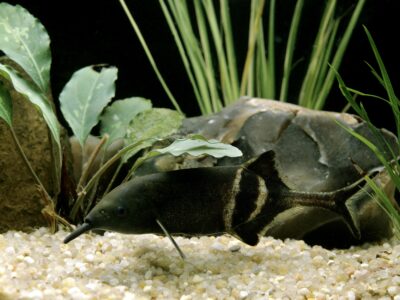
Elephant Fish
Elephant fish are known as the Australian ghost shark, but they are not actually a shark species!

Emerald Tree Monitor
They lay their eggs in termite nests!

Emu
The largest bird in Australia!
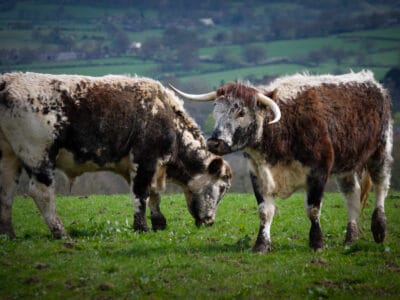
English Longhorn Cattle
Although they look similar to the Texas Longhorn, they are not closely related.

Ermine
A very bold and ferocious predator!
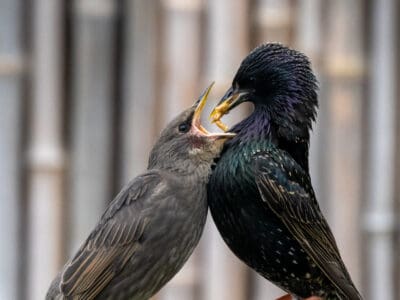
European Starling
European starlings are accomplished mimics, often copying songs or sounds of other birds and animals (frog calls, goats, cats), or even mechanical sounds and human speech!

Fairy-Wren
They forage in groups

Falcon
The fastest creatures on the planet!

Fallow deer
The fallow deer has more variation in its coat colors than most other deer.

False Widow Spider
False spiders actually prey on black widow spiders and other hazardous spiders

Fancy Mouse
Fancy mice are beloved pets with a history of domestication spanning thousands of years!
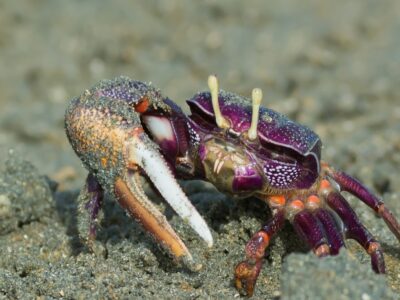
Fiddler Crab
The fiddler crab gets its name from the motion the males make with their over-sized claw during the mating ritual.

Fierce Snake
It can kill multiple humans with the amount of venom it releases in one bite.

Finch
Finches have strong, conical bills that help them break open tough seeds that many other birds cannot.

Firefly
The firefly produces some of the most efficient light in the world
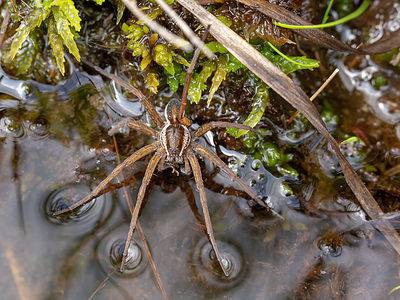
Fishing Spiders
Fishing spiders have hydrophobic hair on their skin that allows them to survive on water

Flea
Adult fleas can jump up to 7 inches in the air
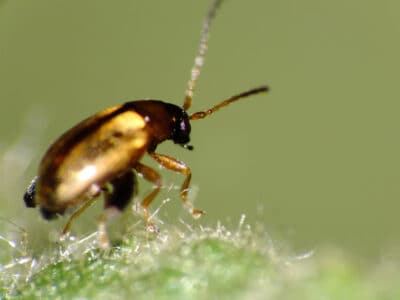
Flea Beetle
Flea beetles can jump like fleas when threatened.
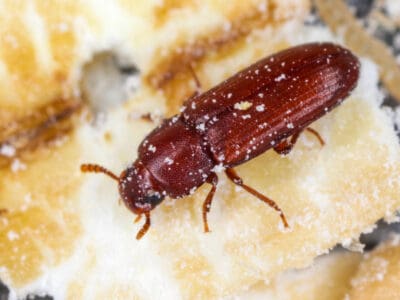
Flour Beetle
Flour beetles are adapted to survive in very dry environments.

Fly
There are more than 240,000 different species!
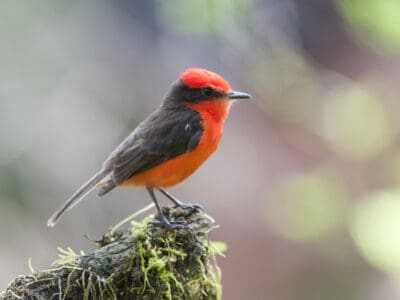
Flycatcher
Most of the hundreds of varieties of flycatchers belong to the Tyrannidae and Muscicapidae families!
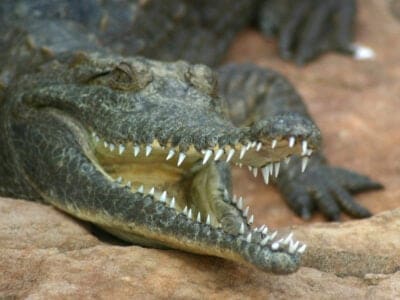
Freshwater Crocodile
The freshwater crocodile is the fastest crocodile on land.

Frilled Lizard
Mainly lives in the trees!

Frizzle Chicken
Frizzle chickens are known for their frizzled feathers, which result from a genetic mutation.

Frog
There are around 7,000 different species!
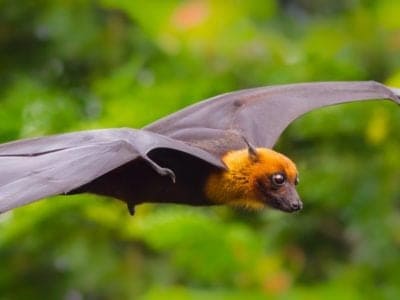
Fruit Bat
Among the largest bats in the world

Fruit Fly
Fruit flies are among the most common research animals in the world
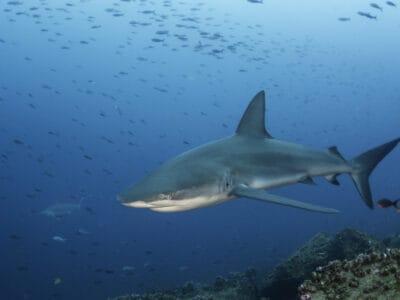
Galapagos Shark
Galapagos sharks are cannibalistic and sometimes eat their young, so the pups stay away from the adults in shallow water.
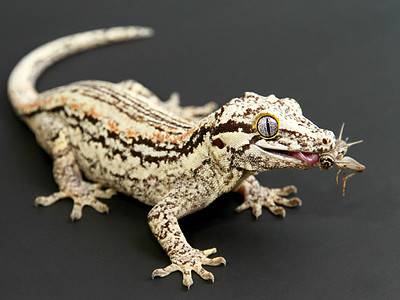
Gargoyle Gecko
Gargoyle Geckos are about an inch long and weigh as little as 3 grams when they hatch!

Gecko
There are thought to be over 2,000 species!

German Cockroach
The most common type of urban roach

Giant Trevally
The largest fish in its genus

Giant Weta
They've been around for 190,000,000 years!

Giant Wood Moth
The giant wood moth is the heaviest known moth in the world.

Glowworm
Found inhabiting dense woodland and caves!

Gnat
Males form large mating swarms at dusk
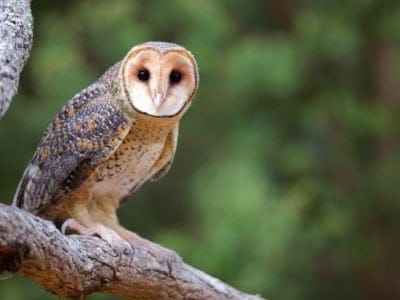
Golden Masked Owl
While flying high above this owl can hear a mouse moving in the tall grass of field!

Gouldian Finch
The male Gouldian finch bobs its head and fluffs its feathers to court a female.

Grasshopper
There are 11,000 known species!

Great Egret
The male egret performs an elaborate courtship display to attract a mate
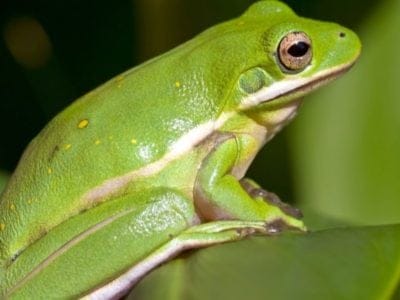
Green Tree Frog
Green tree frogs breathe through their skin
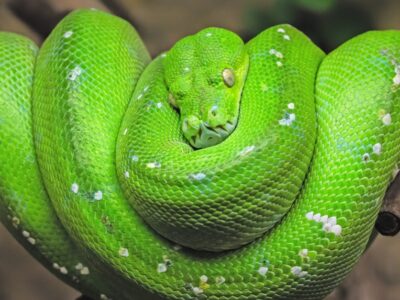
Green Tree Python
Green tree pythons are non-venomous, so to subdue their prey, they have a couple of very unique and highly successful hunting techniques.

Gypsy Moth
One of the most invasive species in the world

Haast’s Eagle
The Haast's eagle was the largest eagle to have ever existed.
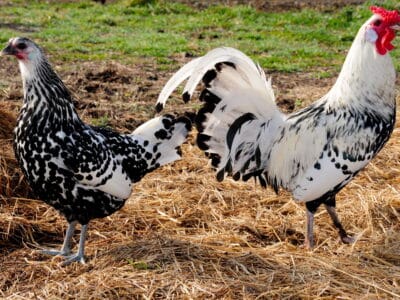
Hamburg Chicken
This breed doesn't usually make nests or incubate their own chicks.

Hamster
Able to run as quickly backwards as forwards!

Hare
Can reach speeds of over 50 mph!
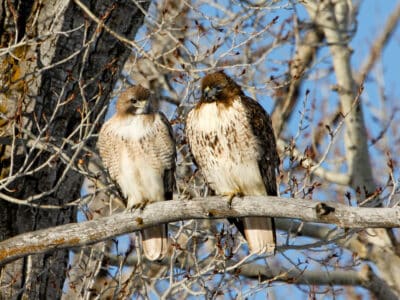
Hawk
While the Ferruginous hawk is the largest specie in the USA, Asia’s Upland buzzard is the biggest overall.

Hawk Moth Caterpillar
Many hawk moth caterpillars eat toxins from plants, but don’t sequester them the way milkweed butterflies do. Most toxins are excreted.
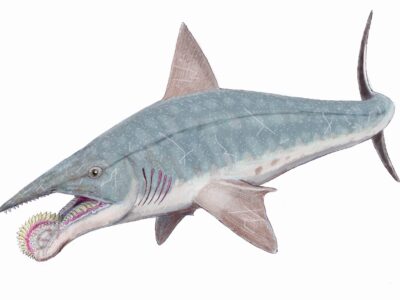
Helicoprion
Helicoprion was one of the largest cartilaginous fish of all time.
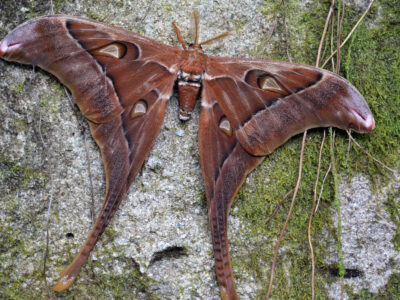
Hercules Moth
Adult Hercules moths don’t eat since they don’t have mouths.

Heron
Inhabits wetlands around the world!

Highland Cattle
Natively found in the Scottish Highlands!
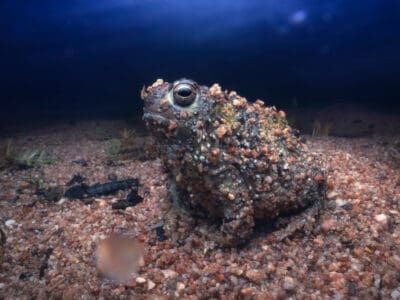
Holy Cross Frog
The holy cross frog has a cross-shaped colored pattern on its back.

Honey Bee
There are only 8 recognized species!
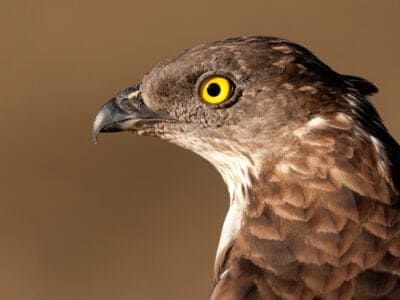
Honey Buzzard
Honey buzzards are medium-sized raptors that earned their names by raiding the nests of bees and wasps.
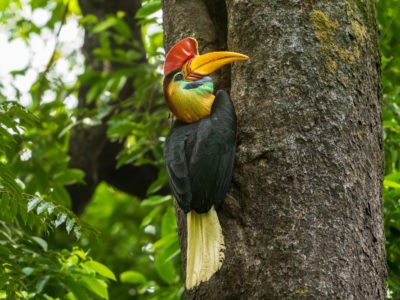
Hornbill
The bird has a massive horn on its bill!
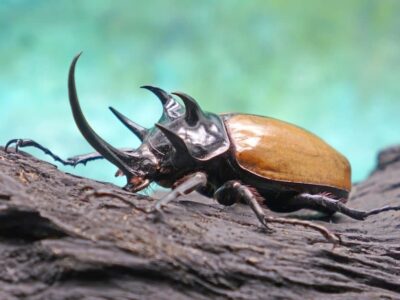
Horned Beetle
These beetles are herbivores but have an intimidating appearance because of the horn-like projection on their heads. However, they are entirely harmless to humans, as they don't sting or bite.

Horse
Has evolved over 50 million years!

Horsefly
Horseflies have been seen performing Immelmann turns, much like fighter jets.

House Sparrow (English Sparrow)
The house sparrow has been introduced all over the world

Housefly
The fly has no teeth

Human
Thought to have orignated 200,000 years ago!
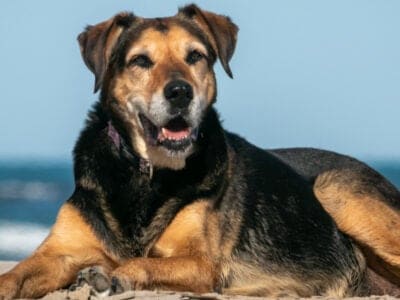
Huntaway
Huntaways have a strong instinct for herding.

Huntsman Spider
Some huntsman spiders have an interesting way of moving around. Some cartwheel while others do handsprings or backflips.

Ibis
Found in swamps, marshes and wetlands!

Inland Taipan
A single inland taipan bite has enough venom to kill a hundred men.

Insect
Insects go back over 350 million years, making the creatures older than man, flowering plants and dinosaurs.

Insects
There are an estimated 30 million species!
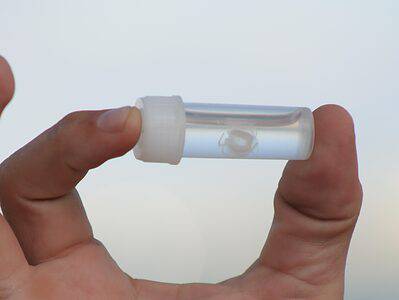
Irukandji Jellyfish
Tiny ocean killer

Jacana
The jacana has the ability to swim underwater
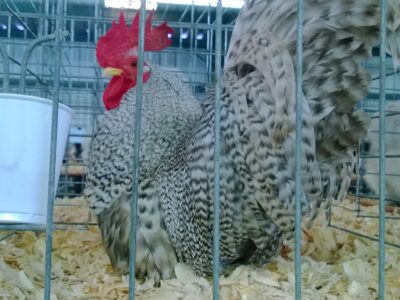
Japanese Bantam Chicken
Japanese bantam chickens are the best flying chicken species
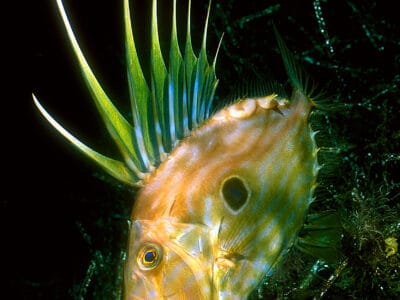
John Dory
The John Dory is often labeled one of the ugliest fish in the world and has no known relatives.

Jungle Carpet Python
Their stunning coloration is sometimes muddy yellow or even tan and black in the wild.
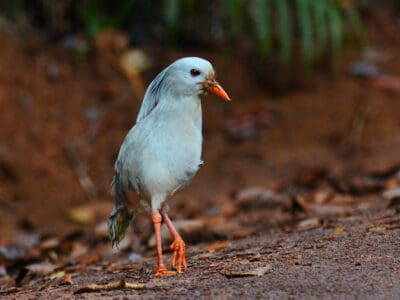
Kagu
The endangered kagu is the only bird in the world with nasal corns!
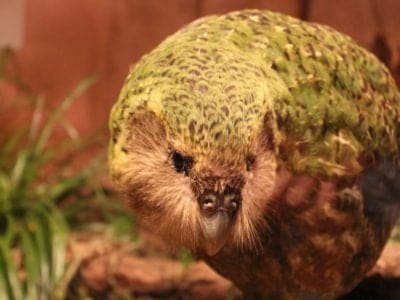
Kakapo
The heaviest species of parrot in the world!

Kangaroo
Females have a deep pouch on their front!
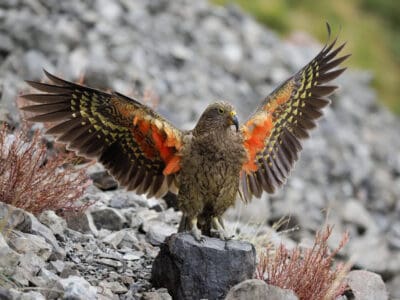
Kea
This lovable pest may come to you asking for food or attempting to steal your belongings! They are named for their loud vocalizations, “kee-aaa!”
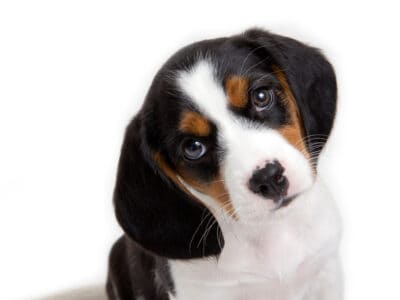
Keagle
These adorable dogs are known for their love of children, strangers, and other animals because of their docile demeanor.
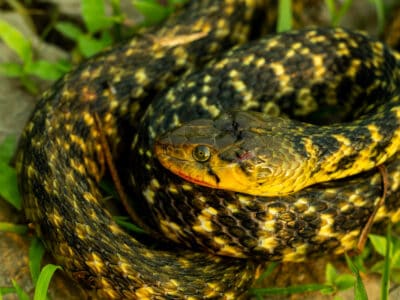
Keelback
The checkered keelback of the east Indies can detach its tail and grow it back, much like a lizard.
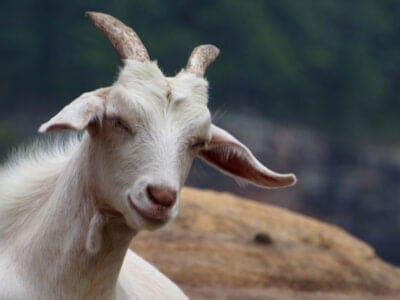
Kiko Goat
Kiko goats breed year-round, and they are not good at defending themselves.
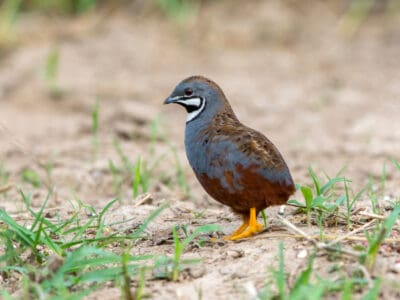
King Quail
Females look similar to males but don’t come in shades of blue

Kissing Bugs
Kissing bugs derive their name from the location they prefer to bite, which is usually close to the lips of the host
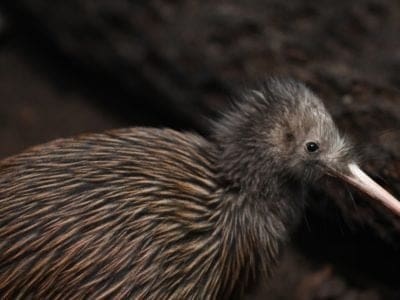
Kiwi
Only found in the forests of New Zealand!
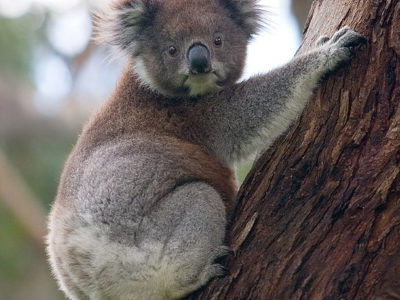
Koala
Spends up to 80% of the time sleeping or resting!

Koolie
The name "koolie" comes from the German mispronunciation of "collie."

Kowari
Kowaris do not drink or take water; all they get is the water content in their diet.

Labout’s Fairy Wrasse
Females are sequential hermaphrodites, which means they can convert to males anytime during their life cycle.

Labradoodle
Friendly and energetic mix-breed!

Lace Bug
May bite when threatened
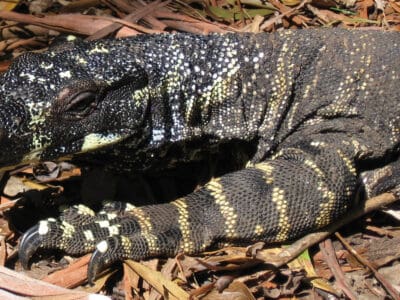
Lace Monitor
When communicating, they make a loud, terrifying hissing sound, and they will strike any potential danger with their mighty tails.

Ladybug
There are more than 5,000 species worldwide!
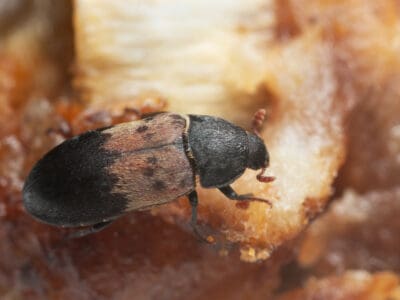
Larder Beetle
Larder beetles were named based on their attraction to food storage rooms or cupboards, but they do not feed on stored food products.

Laughing Kookaburra
The laughing kookaburra is one of four kookaburra species.
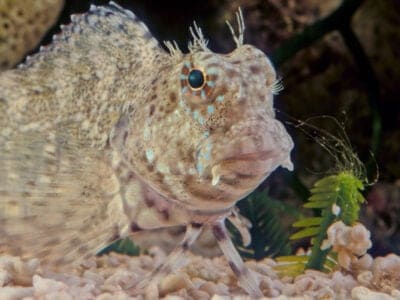
Lawnmower Blenny
Must be in temperatures of 78 degrees Fahrenheit to breed

Leech
Has 10 pairs of eyes!

Leghorn Chicken
Leghorn chickens, one of the most popular industrial breeds, lay up to 320 eggs per year!

Leichhardt’s Grasshopper
Spend their lives
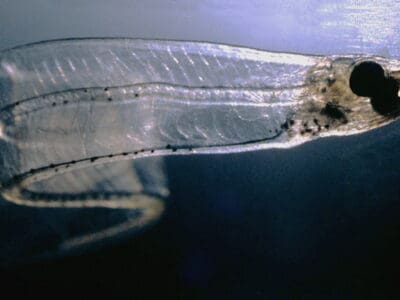
Leptocephalus
Leptocephali have flat bodies filled with jelly-like substances, surrounded by a thin layer of muscle.
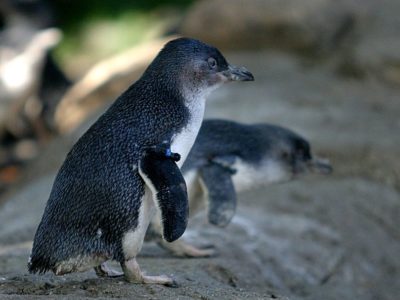
Little Penguin
The smallest species of penguin!

Lizard
There are around 5,000 different species!

Locust
Each locust can eat its weight in plants each day.
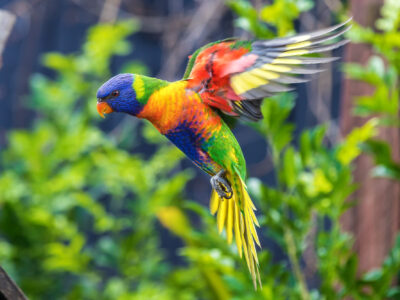
Lorikeet
The lorikeet has a long brush-like tongue with fine hairs on it
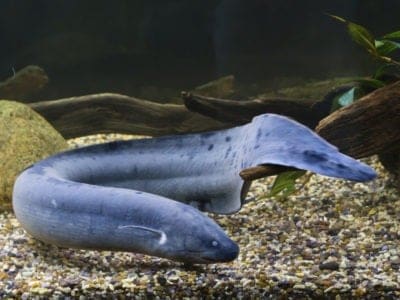
Lungfish
The lungfish first evolved almost 400 million years ago.
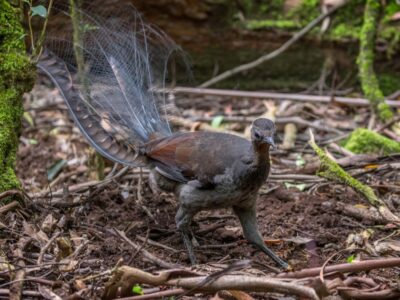
Lyrebird
Lyrebirds mimic birds of prey to deter predators such as birds of prey.

Magpie
They are found across Europe, Asia and Africa!

Mallard
With an appropriate tail wind, the mallard can travel hundreds of miles a day
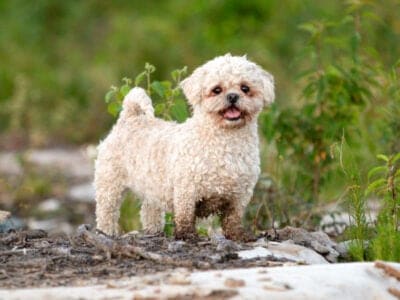
Maltese Shih Tzu
Both parent breeds, the Maltese and Shih Tzu, once entertained royalty!
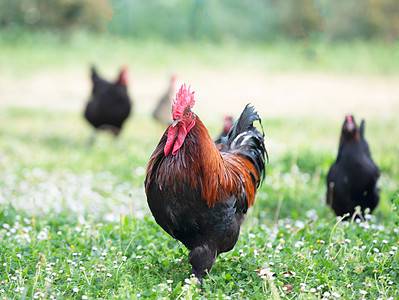
Marans Chicken
Marans chickens produce some of the darkest, chocolate-brown eggs in the world!
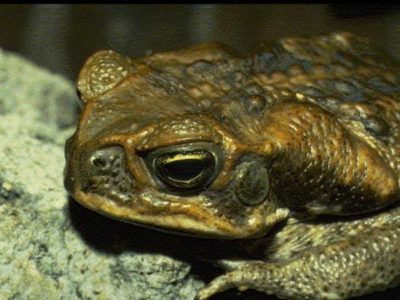
Marine Toad
Produces a toxin used in arrow darts!

Mayfly
There are 2,500 known species worldwide!

Mealworm Beetle
In 1968, the mealworm beetle traveled to space and circled the moon on the Soviet mission Zond 5.

Mealybug
They have a symbiotic relationship with ants.
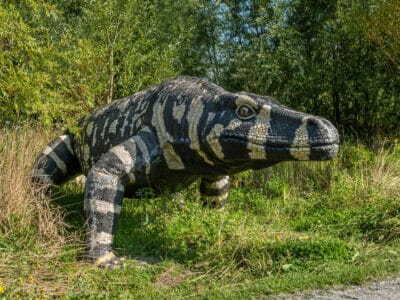
Megalania
Some people believe that Megalania still exists in remote areas, although those beliefs have never been validated with evidence.

Meiolania
The Meiolania had a massive head that it was unable to put fully inside its shell.

Millipede
Some species have a poisonous bite!
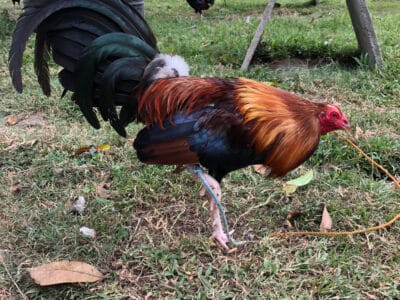
Modern Game Chicken
The Modern Game chicken is a lanky bird with legs that go for days!

Mole
Primarily hunts and feeds on Earthworms!
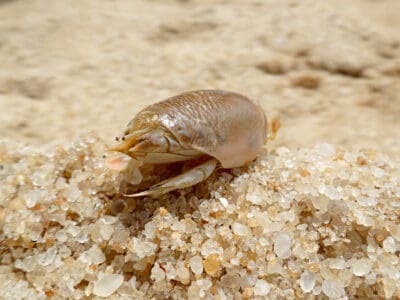
Mole Crab (Sand Flea)
They eat jellyfish tentacles

Mole Cricket
Adult Mole crickets may fly as far as 5 miles during mating season and are active most of the year.

Mollusk
Most molluscs have more than one heart
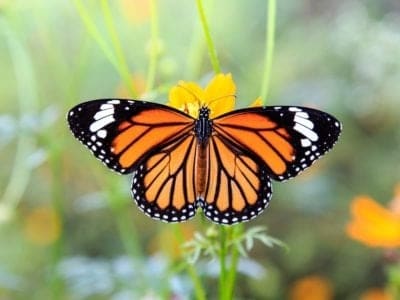
Monarch Butterfly
During migration, Monarch Butterflies may travel 250 or more miles each day.

Mongrel
Has characteristics of two or more breeds!

Monitor Lizard
Some species are thought to carry a weak venom!

Monkey
There are around 260 known species!

Moorhen
Feeds on aquatic insects and water-spiders!

Mosquito
Only the female mosquito actually sucks blood

Moth
There are 250,000 different species!

Mouse
Found on every continent on Earth!

Mouse Spider
The female mouse spider is rarely seen because they don't leave their burrows.
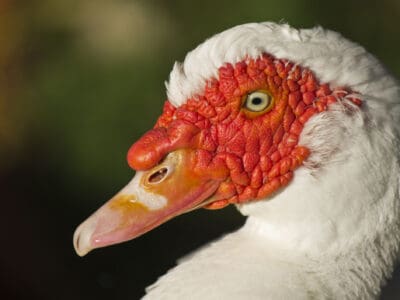
Muscovy Duck
Unlike most duck species, the Muscovy is silent and only makes noise when excited or threatened.
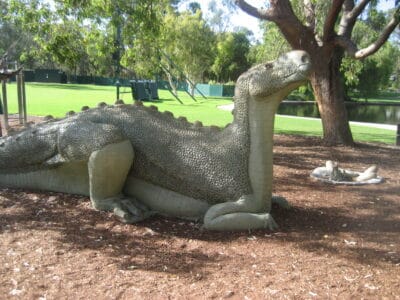
Muttaburrasaurus
They stood about 26 feet tall and weighed more than 3 tons, as heavy as today's African forest elephants.

Muttaburrasaurus
Muttaburrasaurus is named after the town of Muttaburra in central Queensland.
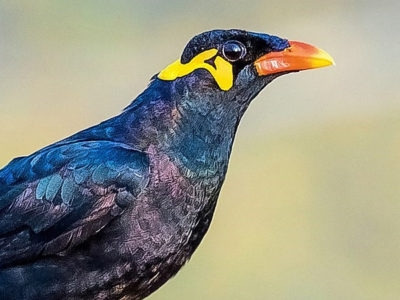
Myna Bird
Many people believe the hill myna bird is better at mimicking humans than a parrot!
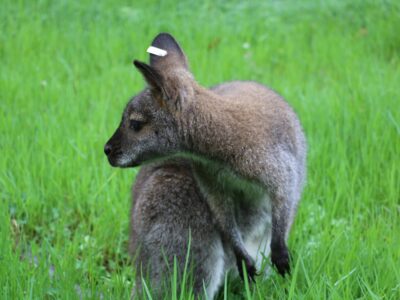
Nabarlek
Nabarleks have teeth like a shark, with new molars continuously emerging from the back.
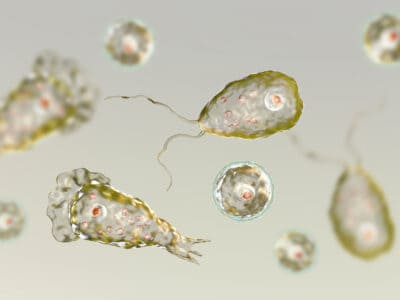
Naegleria
Causes primary amoebic meningoencephalitis
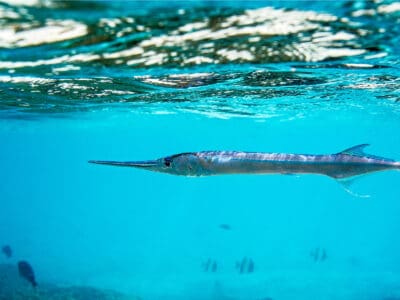
Needlefish
no stomach to digest food

Nematode
Nematodes range in size from 1/10 of an inch to 28 feet long

Neptune Grouper
The largest recorded specimen ever caught was 17" long
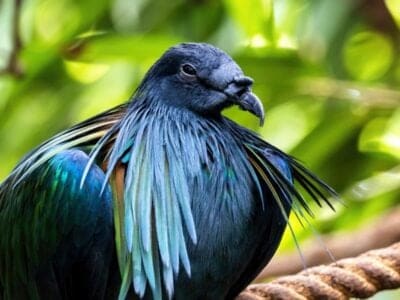
Nicobar pigeon
Unlike other pigeons, Nicobar pigeons don't fly in haphazard flocks but in columns or single file.

No See Ums
There are more than 5,000 species.

Numbat
There are less than 1,000 left in the wild!
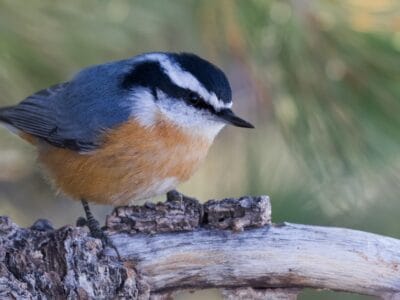
Nuthatch
Nuthatches spend a lot of their time upside down.

Oenpelli python
Oenpelli pythons are unusually thin for a python.

Olive python
The olive python is a gentle giant that is rarely aggressive.

Oranda Goldfish
Oranda goldfish are one of the most popular fancy goldfish breeds

Orb Weaver
Females are about four times the size of males

Oriental Cockroach
Unlike other cockroach species that live indoors living off humans, oriental cockroaches are outdoor scavengers.

Osprey
They reuse nesting sites for 70 years!

Otter
There are 13 different species worldwide

Owl
The owl can rotate its head some 270 degrees
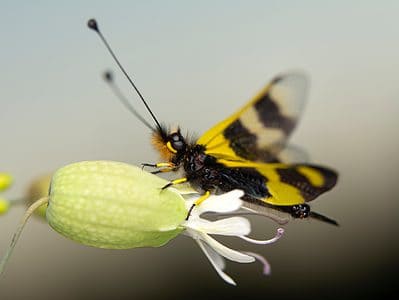
Owlfly (Ascalaphidae)
Adult owlflies can capture prey while flying in the air.
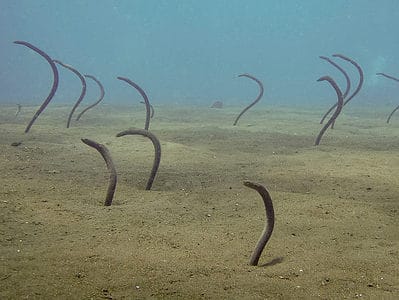
Pacific Spaghetti Eel
They have excellent eyesight
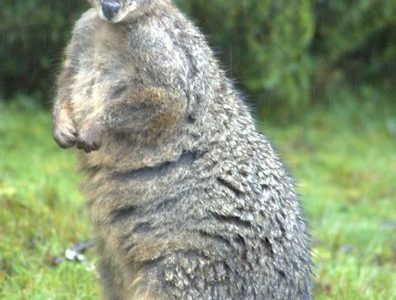
Pademelon
Inhabits the jungles of the far east!

Parakeet
Monk parakeets are the only parakeets that actually build nests. They’re also the only parakeets to nest in great colonies.

Parrot
Can live for up to 100 years!

Peacock Spider
They can jump up to 10 centimeters (40 times their body size) and see the full rainbow spectrum of light, including UV.
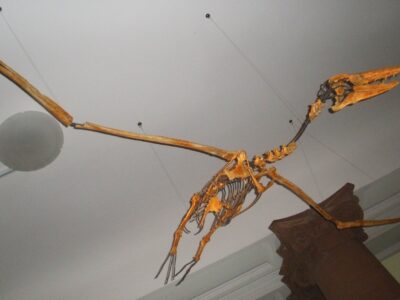
Pelagornithidae
The biggest members of the Pelagornithidae family were the largest flying birds known.
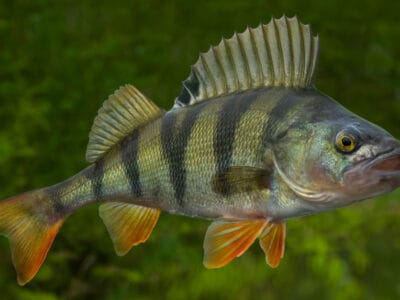
Perch Fish
Some of the most delicious gamefish in the world

Peregrine Falcon
Fastest animal on Earth
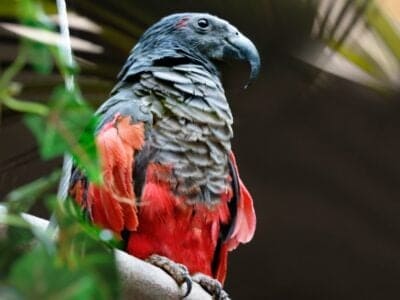
Pesquet’s Parrot (Dracula Parrot)
It’s one of only three parrots with naked faces.

Pheasant
Females lay between 8 and 12 eggs per clutch!

Pheasant-tailed Jacana
The pheasant-tailed jacana is the only species in its family that migrates long distances.

Pig-Nosed Turtle
Their family lineage dates back 140 million years

Pigeon
They can find their way back to their nests from up to 1300 miles away.

Platinum Arowana
The male broods the eggs and baby fish in his mouth.

Platypus
One of the only mammals to lay eggs!

Pliosaur
Pliosaurs were the short-necked version of plesiosaurs.
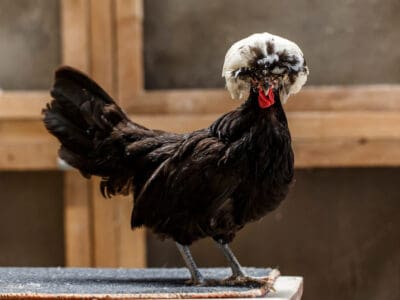
Polish Chicken
The Polish chicken has a large, feathered crest supported by a round, bony prominence on the skull!

Pompano Fish
They are bottom-feeders
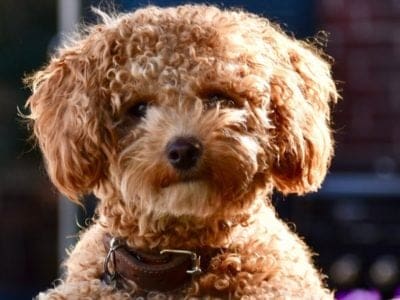
Poochon
The Poochon was first bred in Australia.

Possum
There are 69 species on the Australian continent!
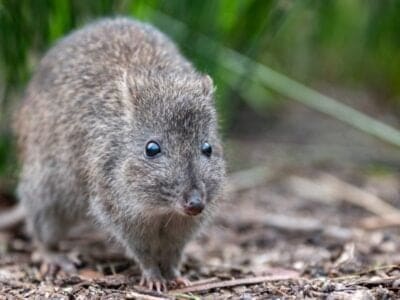
Potoroo
They can carry items with their tail.

Powderpost Beetle
Powderpost beetles prefer living in moist tree limbs, dead wood, and branches. They get into homes through infested joists, paneling, rafters, flooring, and finished wood products.

Praying Mantis
The mantis can turn its head 180 degrees.

Procoptodon
The largest variety of kangaroo to have ever been discovered.
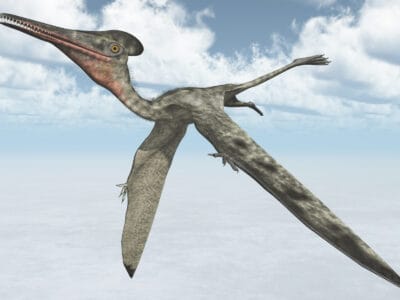
Pterodactyl
Pterodactyl is not technically a dinosaur. Although they lived during the same time as dinosaurs, they are classified as winged reptiles.

Pygmy python
These snakes have been seen traveling as group of 3-5.
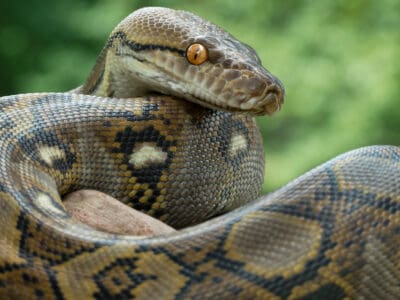
Python
Female pythons lay eggs and defend them until they hatch.

Quail
Inhabits woodland and forest areas worldwide!

Quokka
Makes runways through the long grasses!
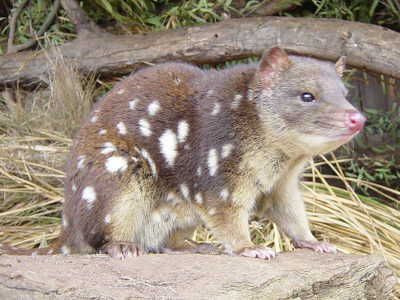
Quoll
Found across Australia and Papua New Guinea!

Rat
Omnivores that eat anything!

Rat Snakes
Rat snakes are constrictors from the Colubridae family of snakes.
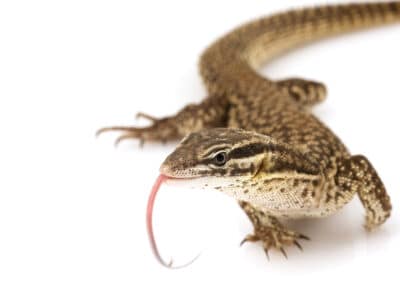
Red Ackie Monitor
The red ackie prefers burrowing to climbing.
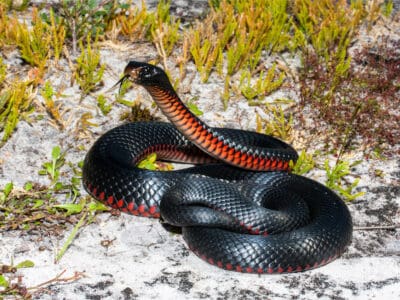
Red-Bellied Black Snake
These snakes are the only ones in the genus Pseudechis to give birth to live offspring.
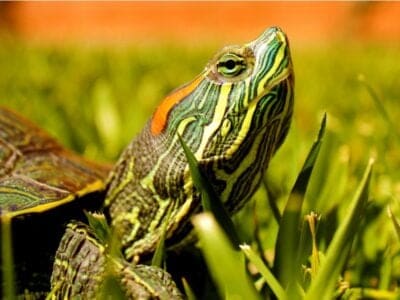
Red-Eared Slider
Sliders spend lots of time basking in the sun. As cold-blooded animals, they need the sun to heat up.
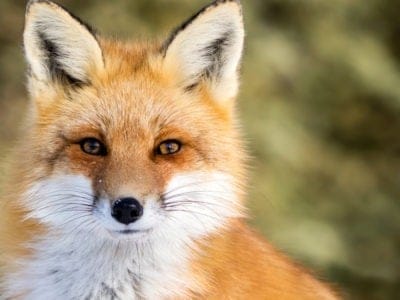
Red Fox
The red fox actually has many different variations of fur, including silver and brown.
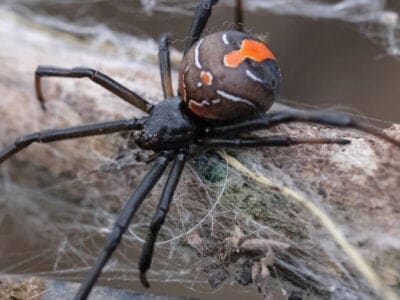
Redback Spider
The redback spiders found in New Caledonia differ from other populations in that they don’t practice sexual cannibalism and don’t bite people as much.

Rhino Beetle
Rhinoceros beetles can lift objects 850 times their weight
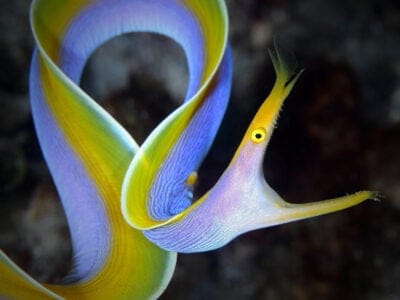
Ribbon Eel
Can fit its body into a tiny crevice of a reef

River Turtle
Inhabits freshwater habitats around the world!
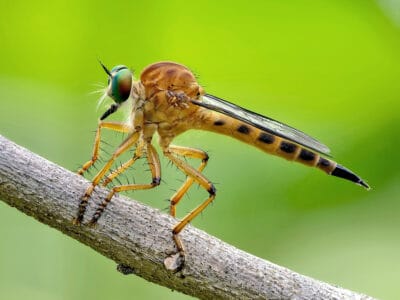
Robber Flies
The female pretend they are dead if they do not find the male worthy of mating.

Robin
There are more than 45 species in Australia alone!
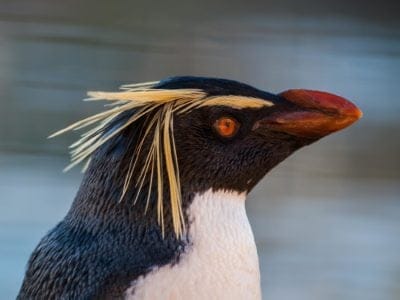
Rockhopper Penguin
There are 3 different species!

Rodents
The capybara, the world’s largest rodent, likes to be in and around bodies of water. Because of this, the Catholic Church in South America decided that it was a fish, and people were allowed to eat it during Lent and First Fridays.

Rooster
Will mate with the entire flock!
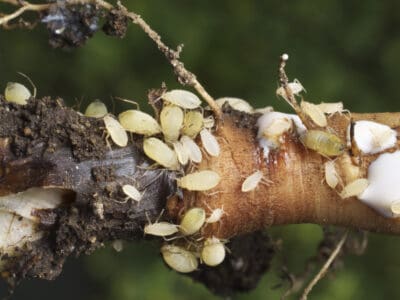
Root Aphids
Nymphs take 9 to 10 days on average to mature, with a complete lifespan of an estimated 30 days.
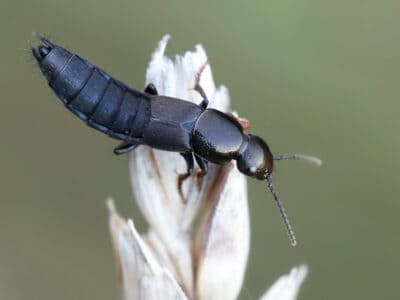
Rove Beetle
When threatened, rove beetles raise the ends of their body like scorpions, but they have no sting.

Sable Ferret
Ferrets were used during the Revolutionary War to keep down the rat population.
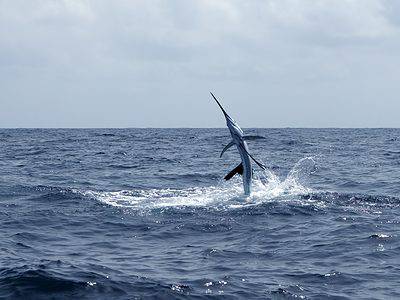
Sailfish
Fast billfish with a sail-like dorsal fin
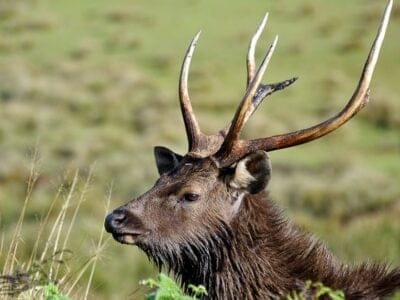
Sambar
Male sambars will compete for mates by clashing together with their antlers

Sand Crab
The sand crab burrows beneath the sand with its tail
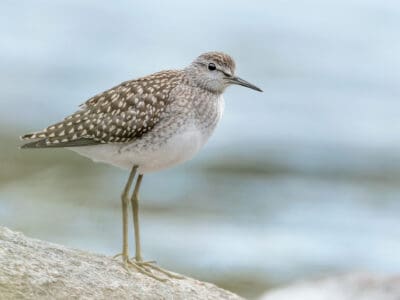
Sandpiper
Some sandpipers can migrate more than 8,000 miles without stopping!
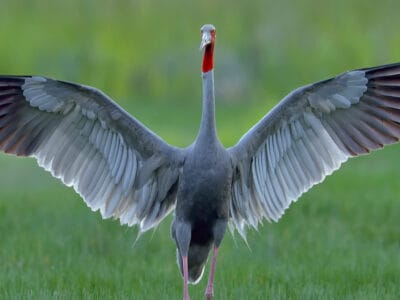
Sarus Crane
Parents use low calls to tell their chicks to freeze and lie still when danger lurks.
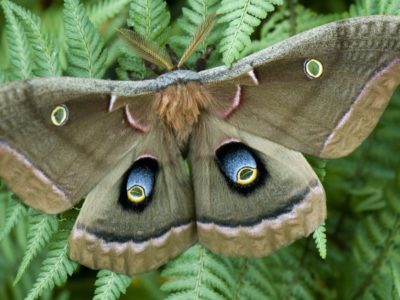
Saturniidae Moth
Some of the largest moths in the world
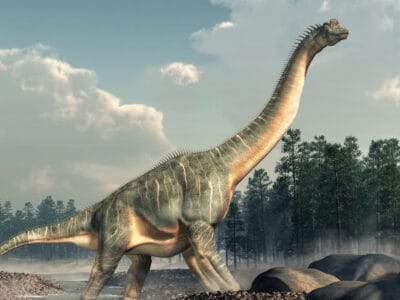
Sauropoda
Newly hatched sauropods weighted less than 11 pounds and put on 2 tons of weight a year!
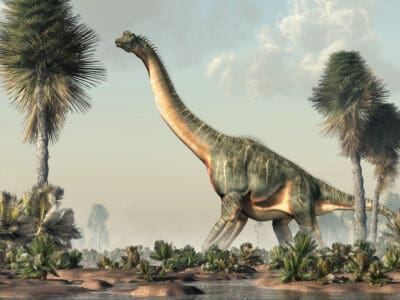
Sauropoda
Sauropods lived in herds.
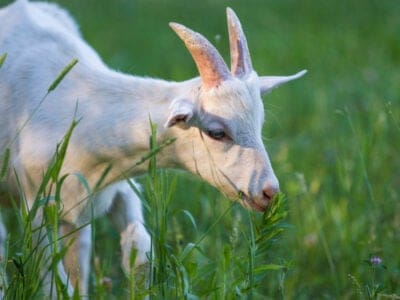
Savanna Goat
Savanna goats have only existed since 1957.

Scarab Beetle
The ancient Egyptians worshipped scarabs.

Scorpion
There are around 2,000 known species!
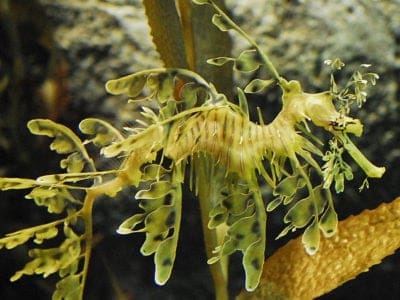
Sea Dragon
Inhabits tropical coastal waters of Australia!

Sea Eagle
The sea eagle tends to mate for life with a single partner

Sea Snake
The sea snake is incredibly venomous, even more than a cobra!”
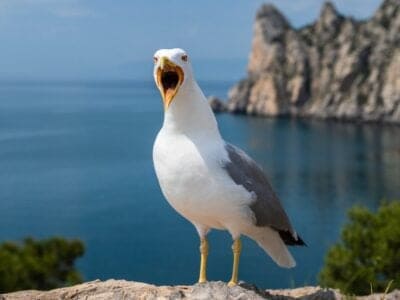
Seagull
Some gulls are capable of using tools

Seahorse
Males give birth to up to 1,000 offspring!

Senepol Cattle
Senepol cattle have a distinctive red color and no horns.
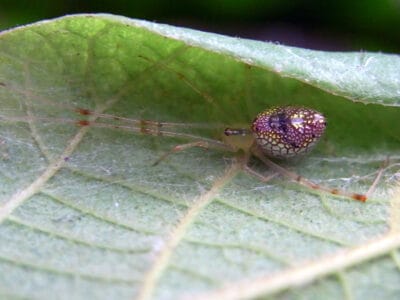
Sequined Spider
You may even be able to see a reflection in their reflective sequins!

Sheep
Around 35 million in the English countryside!

Shrew
The spinal column of the shrew Scutisorex somereni is so strong and reinforced that it can support the weight of an adult human.

Shrimp
There are 2,000 different species worldwide!

Silky Terrier
Silky terriers can be trained to participate in many events, including herding, agility, rally, tracking and fly ball.

Skink Lizard
Some skinks lay eggs in some habitats while giving birth to skinklets in other habitats.

Skua
Skuas will chase other birds until they give up their catch

Slug
They glide around on one foot, which is aided by the slime they produce

Smokybrown Cockroach
Has up to 45 eggs per egg case

Snail
There are nearly 1,000 different species!

Snake
There are around 4,000 known species worldwide
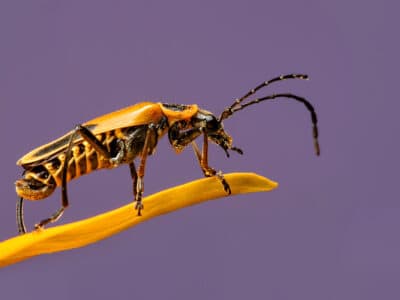
Soldier Beetle
Soldier beetles resemble fireflies, but they're not bioluminescent.

Sparrow
There are 140 different species!
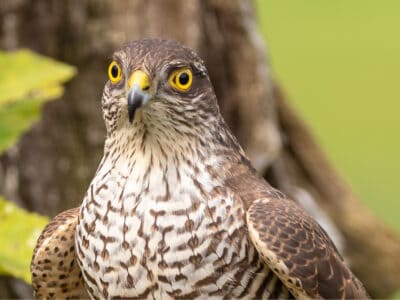
Sparrowhawk
The sparrowhawk is named after the fact that it hunts down and consumes sparrows
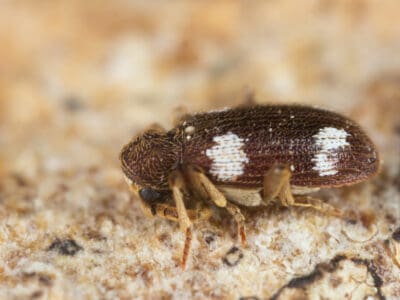
Spider Beetle
Spider beetles have globular bodies, which makes them look like spiders.

Spider Wasp
They prey on spiders to feed their larvae or they parasitize other spider wasps.

Spotted Garden Eel
Males battle each other over females and territory
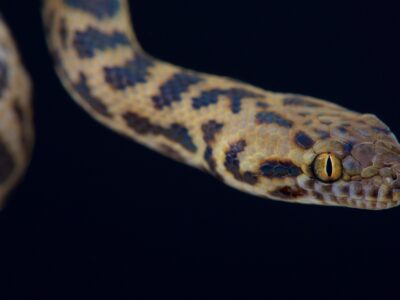
Spotted python
Their favorite food is bats and they hang from cave entrances to snatch them out of midair!
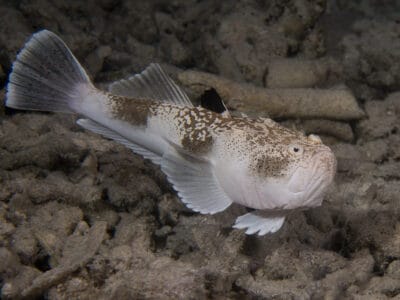
Stargazer Fish
Uses an electric shock to stun its prey!

Stick Insect
There are more than 3,000 different species!

Stork
They can’t sing like other birds.

Strawberry Hermit Crab
When strawberry hermit crabs find shells that are larger than their own, they gather in a line from biggest to smallest. Once the biggest one sheds its shell, the next one in line will claim it, which is repeated down the line.
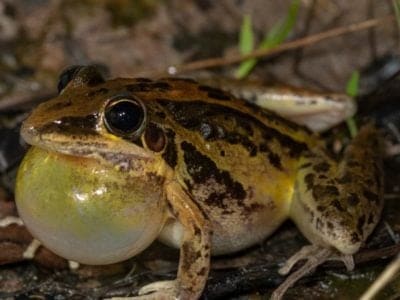
Striped Rocket Frog
Long powerful hind legs!
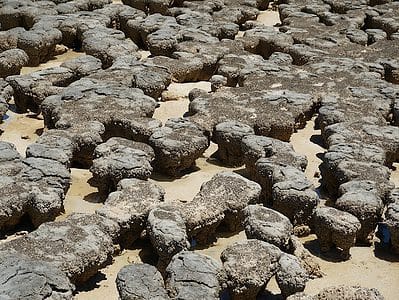
Stromatolite
Stromatolites played a key role in the development of life on Earth.
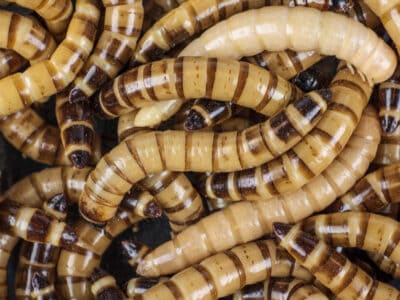
Superworm
These larvae are native to Central and South America but now occur on every continent except Antarctica
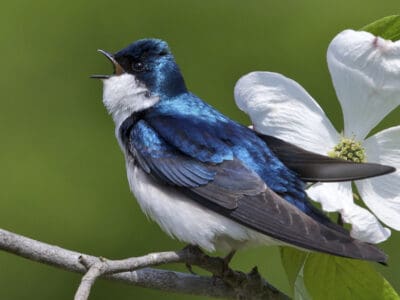
Swallow
swallows have aerodynamic bodies for hunting in flight

Swan
Populations have been affected by pollution!
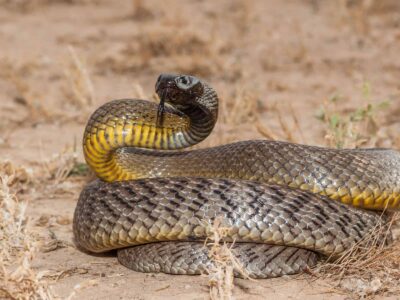
Taipan
The Most Venomous Snakes On Earth
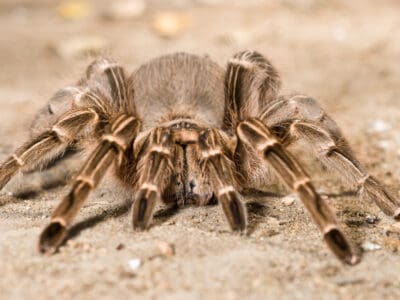
Tarantula
More than 1000 species of tarantulas have been identified all around the world!

Tarantula Hawk
Tarantula hawks are excellent pollinators, especially for milkweed.
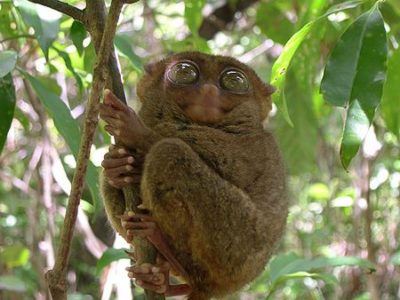
Tarsier
Each eye weighs more than their whole brain!

Tasmanian Devil
Exclusively found on the island of Tasmania!
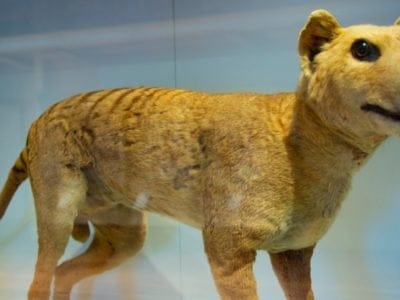
Tasmanian Tiger
The Tasmanian tiger could open its mouth almost 90 degrees.

Tasmanian Tiger Snake
The Tasmanian tiger snake gets its name from their banded skin, closely resembling a tiger's stripes.
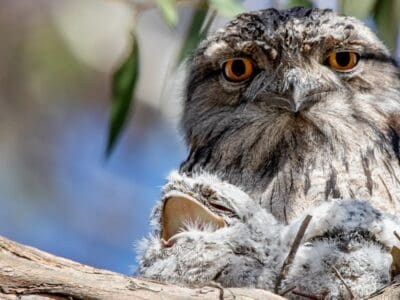
Tawny Frogmouth
The tawny frogmouth is a master of camouflage that can hide in plain sight!
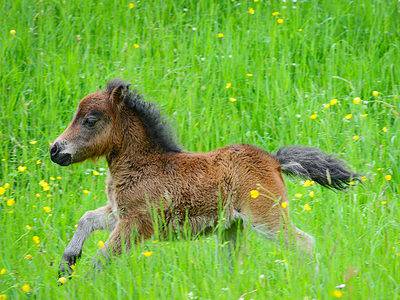
Teacup Miniature Horse
Female teacup minis become sexually mature between 2 and 5 years old, but breeders typically wait until their horse is 3 before letting her reproduce to prevent complications.

Tenterfield Terrier
These terriers have quick minds and fast feet making them excellent for agility competitions.

Termite
Their mounds can be up to 9 meters tall!

Terrier
Terriers were once the greatest dogs in the world.
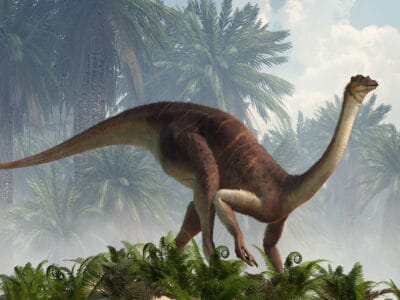
Theropod
Some theropods had feathers and may have been ancestors of modern birds.
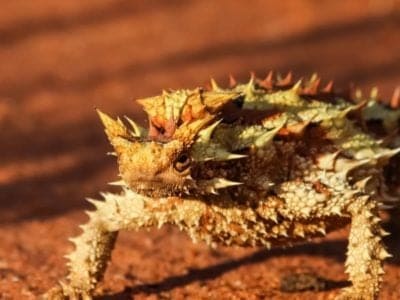
Thorny Devil
Found only on mainland Australia!

Thrush
The American robin is called the robin because its red breast reminded European settlers of the robin back in the old country.
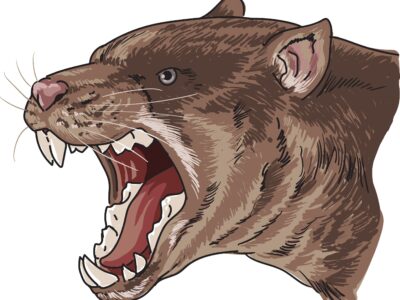
Thylacoleo
Scientists have speculated that its bite force was equivalent to that of a 551 pound lion!
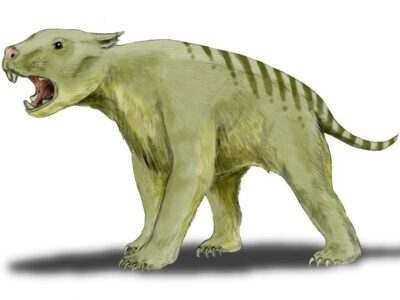
Thylacoleo carnifex
Thylacoleo carnifex was the largest carnivorous mammal in Australia

Tick
They inject hosts with a chemical that stops them from feeling the pain of the bite

Tiger Beetle
The adult tiger beetle is one of the fastest land insects in the world

Tiger snake
Tiger Snakes can spend nine minutes underwater without returning to the surface to breathe

Tiger Trout
As tiger trout are sterile, they cannot produce offspring. However, they do have relatively long lifespans and can live up to 10 years in captivity.
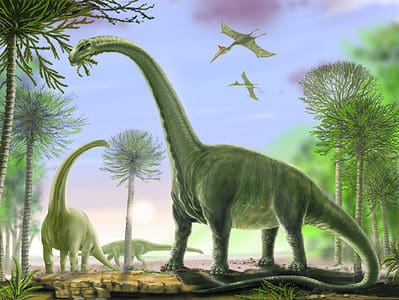
Titanosaur
Among the largest land animals to ever exist

Tomato Hornworm
The tomato hornworm is a ferocious pest that can eat all parts of a plant, including the fruits.

Tortoise
Can live until they are more than 150 years old!

Tree Cricket
They make music with their wings

Tree Frog
Found in warmer jungles and forests!
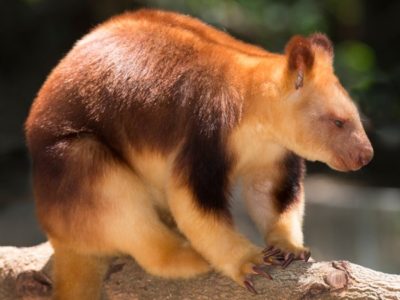
Tree Kangaroo
It’s the only macropod that lives in trees.

Tree Snake
Though this snake’s venomous bite isn’t harmful to adults, it can be dangerous to children

Treecreeper
Their tailfeathers help them maintain their balance on a tree trunk

Treehopper
The colors, shapes, and intricacies of treehoppers’ helmets makes them unique and visually stunning.
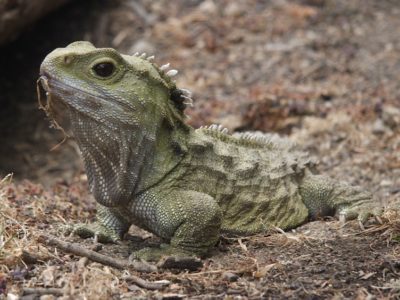
Tuatara
Only found on a few of New Zealand's islands!
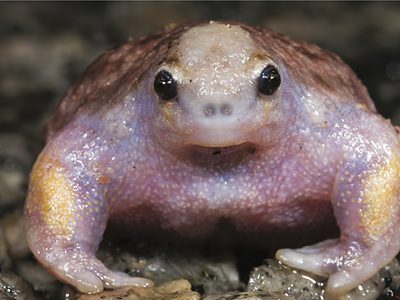
Turtle Frog
A turtle frog can eat more than 400 termites in a single meal.

Turtles
Some species of aquatic turtles can get up to 70 percent of their oxygen through their butt.

Ulysses Butterfly
Ulysses butterflies have come back from endangered status to just "threatened."
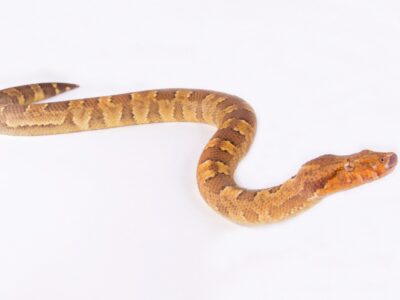
Viper Boa
These boas aren't really vipers, they're nonvenomous constrictors that look like vipers.
Waimanu
The albatross is related to the waimanu!
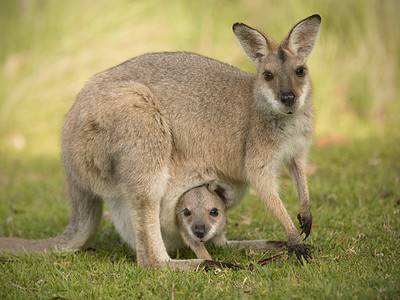
Wallaby
There are roughly 30 different species!
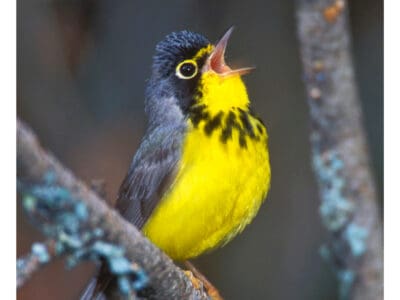
Warbler
Warblers are so called because of the trills of their song.

Wasp
There are around 75,000 recognised species!
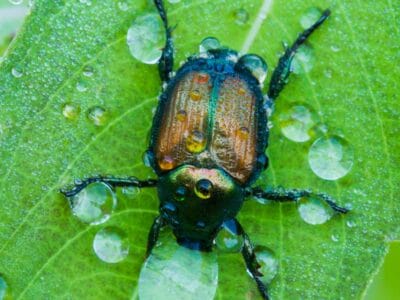
Water Beetle
Water beetles bite; they use their legs to inject venomous digestive saliva

Water Buffalo
Has been domesticated for thousands of years!
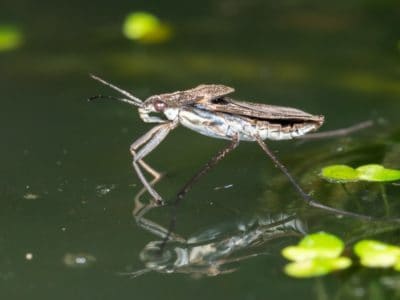
Water Bug
Some species of water bugs can deliver a painful bite when handled.
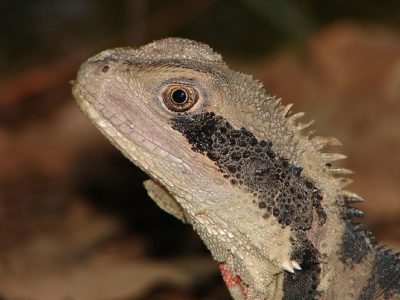
Water Dragon
Spends most of it's time in the trees!

Wax Moth
The Wax Moth larvae are more dangerous than the adult.

Welsh Black Cattle
Welsh Black Cattle were once used as currency in Wales and referred to as “black gold”.
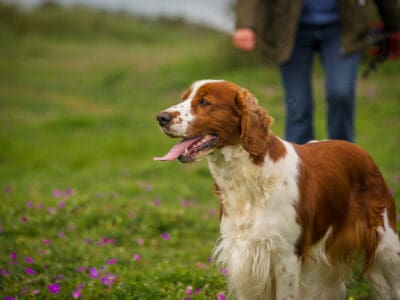
Welsh Springer Spaniel
Due to being so attached to their owners, the Welsh Springer Spaniel does not do well with being left alone and can experience separation anxiety.

White Butterfly
This butterfly determines the smell and taste of a flower with its feet.

White Ferret / Albino Ferrets
There are two different types of white ferrets!
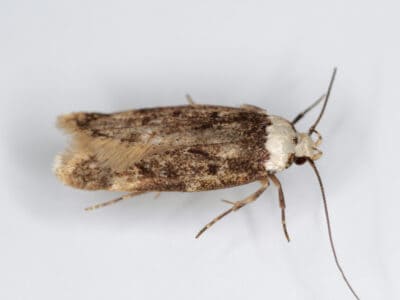
White-shouldered House Moth
The larva is the pest because a fully-grown white-shouldered house moth cannot feed; it can only absorb liquid
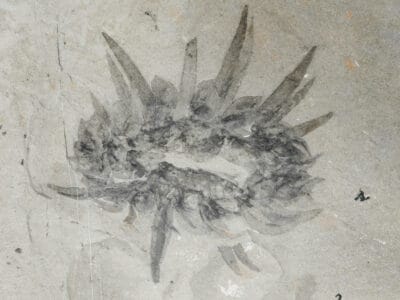
Wiwaxia
The body of Wiwaxia was covered by rows of sclerites and spines

Wolf Spider
Carnivorous arachnid that hunts its prey.
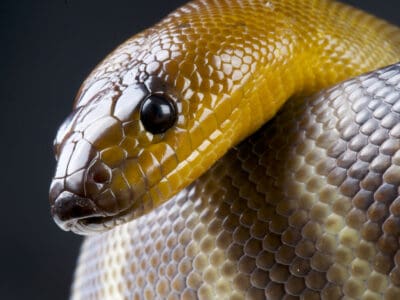
Woma Python
Woma pythons often prey on venomous snakes and are immune to some venoms.
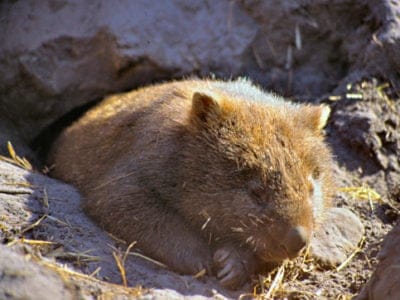
Wombat
Spends most of the day underground!

Woodlouse
This animal can roll up into a ball

Woodlouse Spider
Unlike most spiders, woodlouse spiders don’t build a web.
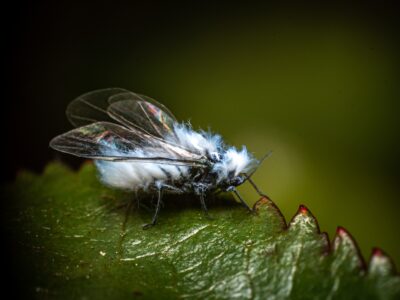
Woolly Aphids
Another name for these fuzzy insects is "boogie-woogie aphids" because of their habit of lifting their posteriors and pulsing them in synchronized motions when threatened.

Worm
Doesn’t have eyes.
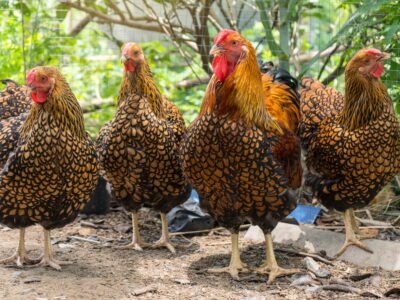
Wyandotte Chicken
The Wyandotte chicken was the first dual-purpose American chicken bred for both meat and eggs!
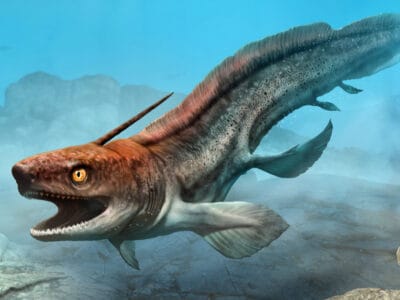
Xenacanthus
Smal eel-like ancient shark

Yabby
The yabby can survive long periods of droughts by burrowing into the soil.

Yellow-Bellied Sea Snake
Sea snakes spend approximately 90% of their lives under water.

Yellow Crazy Ant
One of the top 100 worst invasive species!
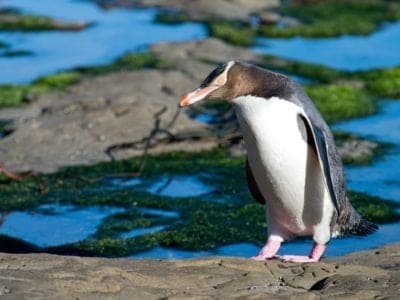
Yellow-Eyed Penguin
The rarest species of penguin!

Yellowhammer
It interbreeds with the pine bunting
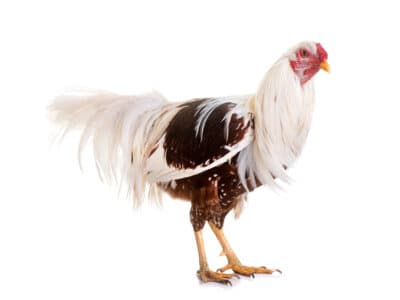
Yokohama Chicken
Yokohama chickens have snow white feathers with tails reaching up to 4 feet in length.
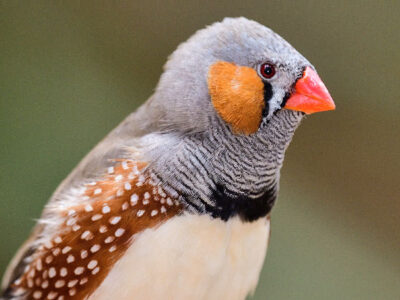
Zebra Finch
The male zebra finch creates a unique song by drawing inspiration from its parent or tutor
Oceanian Animals List
- Ackie Monitor
- Admiral Butterfly
- Albatross
- Allosaurus
- Amethystine Python (Scrub Python)
- Angora Goat
- Anomalocaris
- Ant
- Apple Moth
- Arafura File Snake
- Archerfish
- Atlas Moth
- Australian Bulldog
- Australian Cattle Dog
- Australian Cockroach
- Australian Firehawk
- Australian Flathead Perch
- Australian Gecko
- Australian Kelpie Dog
- Australian Labradoodle
- Australian Mist
- Australian Shepherd
- Australian Terrier
- Australorp Chicken
- Avocet
- Bagworm Moth
- Banana Spider
- Bandicoot
- Bark Beetle
- Barn Owl
- Barn Swallow
- Bass
- Bat
- Beaglier
- Bearded Dragon
- Bed Bugs
- Bee
- Bee-Eater
- Beetle
- Bichpoo
- Bilby
- Bird
- Bird Of Paradise
- Biscuit Beetle
- Black Aphids
- Black-headed python
- Black Widow Spider
- Blacktip Reef Shark
- Blind Snake
- Blister Beetle
- Blowfly
- Blue Andalusian
- Blue Dragon Sea Slug
- Boelen’s python
- Boiga
- Bombardier Beetle
- Box Jellyfish
- Brahminy Blindsnake
- Brazilian Treehopper
- Bredl’s Python
- Brown Dog Tick
- Brown Snake
- Brown Tree Snake
- Budgerigar
- Burrowing Frog
- Butterfly
- Cactus Moth
- Camel
- Camel Cricket
- Campine Chicken
- Cane Spider
- Carpenter Ant
- Carpet Beetle
- Carpet Python
- Carrion Beetle
- Cashmere Goat
- Cassowary
- Cat
- Caterpillar
- Catfish
- Centipede
- Central Ranges Taipan
- Chicken
- Chigger
- Children’s python
- Christmas Beetle
- Christmas Island Red Crab
- Chromodoris Willani
- Cicada
- Cigarette Beetle
- Click Beetle
- Clock Spider
- Clothes Moth
- Coastal Carpet Python
- Coastal Taipan
- Cochin Chicken
- Cockatiel
- Cockatoo
- Cockroach
- Coconut Crab
- Codling Moth
- Collett’s Snake
- Comb-crested Jacana
- Common Furniture Beetle
- Common House Spider
- Common Spotted Cuscus
- Cone Snail
- Coral Snake
- Corella
- Cormorant
- Cosmic Caterpillar
- Cow
- Crab
- Crab Spider
- Crane
- Crayfish
- Crested Gecko
- Crested Penguin
- Cricket
- Crocodile
- Crocodile Monitor
- Crocodylomorph
- Crow
- Cuckoo
- Damselfish
- Darkling Beetle
- Death Adder
- Deathwatch Beetle
- Diamond Python
- Diamondback Moth
- Dickinsonia
- Dingo
- Dinosaur Shrimp
- Diprotodon
- Dobsonfly
- Dog
- Dog Tick
- Donkey
- Dragonfly
- Dromornis stirtoni
- Duck
- Dung Beetle
- Dunnock
- Dusky Shark
- Earthworm
- Earwig
- Eastern Barred Bandicoot
- Eastern Brown Snake
- Eastern Tiger Snake
- Echidna
- Eclectus Parrot
- Eel
- Egret
- Elephant Fish
- Emerald Tree Monitor
- Emu
- English Longhorn Cattle
- Ermine
- European Starling
- Fairy-Wren
- Falcon
- Fallow deer
- False Widow Spider
- Fancy Mouse
- Fiddler Crab
- Fierce Snake
- Finch
- Firefly
- Fishing Spiders
- Flea
- Flea Beetle
- Flour Beetle
- Fly
- Flycatcher
- Freshwater Crocodile
- Frilled Lizard
- Frizzle Chicken
- Frog
- Fruit Bat
- Fruit Fly
- Galapagos Shark
- Gargoyle Gecko
- Gecko
- German Cockroach
- Giant Trevally
- Giant Weta
- Giant Wood Moth
- Glowworm
- Gnat
- Golden Masked Owl
- Gouldian Finch
- Grasshopper
- Great Egret
- Green Tree Frog
- Green Tree Python
- Gypsy Moth
- Gypsy Moth Caterpillar
- Haast’s Eagle
- Hamburg Chicken
- Hamster
- Hare
- Hawk
- Hawk Moth Caterpillar
- Helicoprion
- Hercules Moth
- Heron
- Highland Cattle
- Holy Cross Frog
- Honey Bee
- Honey Buzzard
- Hornbill
- Horned Beetle
- Horse
- Horsefly
- House Sparrow (English Sparrow)
- Housefly
- Human
- Huntaway
- Huntsman Spider
- Ibis
- Inland Taipan
- Insect
- Insects
- Irukandji Jellyfish
- Jacana
- Japanese Bantam Chicken
- John Dory
- Jungle Carpet Python
- Kagu
- Kakapo
- Kangaroo
- Katydid
- Kea
- Keagle
- Keelback
- Kiko Goat
- King Quail
- Kissing Bugs
- Kitefin Shark
- Kiwi
- Koala
- Koolie
- Kowari
- Labout’s Fairy Wrasse
- Labradoodle
- Lace Bug
- Lace Monitor
- Ladybug
- Larder Beetle
- Laughing Kookaburra
- Lawnmower Blenny
- Leafcutter Bee
- Leech
- Leghorn Chicken
- Leichhardt’s Grasshopper
- Leptocephalus
- Little Penguin
- Lizard
- Locust
- Lorikeet
- Lungfish
- Lyrebird
- Magpie
- Mallard
- Maltese Shih Tzu
- Marans Chicken
- Marine Toad
- Mayfly
- Mealworm Beetle
- Mealybug
- Megalania
- Meiolania
- Millipede
- Modern Game Chicken
- Mole
- Mole Crab (Sand Flea)
- Mole Cricket
- Mollusk
- Monarch Butterfly
- Mongrel
- Monitor Lizard
- Monkey
- Moorhen
- Mosquito
- Moth
- Mourning Gecko
- Mouse
- Mouse Spider
- Mulga Snake
- Muscovy Duck
- Muttaburrasaurus
- Muttaburrasaurus
- Myna Bird
- Nabarlek
- Naegleria
- Needlefish
- Nematode
- Neptune Grouper
- Nicobar pigeon
- No See Ums
- Norway Rat
- Numbat
- Nuthatch
- Oenpelli python
- Olive python
- Oranda Goldfish
- Orb Weaver
- Oriental Cockroach
- Osprey
- Otter
- Owl
- Owlfly (Ascalaphidae)
- Pacific Spaghetti Eel
- Pademelon
- Parakeet
- Parrot
- Peacock Spider
- Pelagornithidae
- Perch Fish
- Peregrine Falcon
- Pesquet’s Parrot (Dracula Parrot)
- Pheasant
- Pheasant-tailed Jacana
- Pig-Nosed Turtle
- Pigeon
- Platinum Arowana
- Platypus
- Pliosaur
- Polish Chicken
- Pompano Fish
- Poochon
- Possum
- Potoroo
- Powderpost Beetle
- Praying Mantis
- Procoptodon
- Pterodactyl
- Pygmy python
- Python
- Quail
- Quokka
- Quoll
- Rat
- Rat Snakes
- Red Ackie Monitor
- Red-Bellied Black Snake
- Red-Eared Slider
- Red Fox
- Redback Spider
- Rhino Beetle
- Ribbon Eel
- River Turtle
- Robber Flies
- Robin
- Rockhopper Penguin
- Rodents
- Rooster
- Root Aphids
- Rove Beetle
- Sable Ferret
- Sailfish
- Sambar
- Sand Crab
- Sandpiper
- Sarus Crane
- Saturniidae Moth
- Sauropoda
- Sauropoda
- Savanna Goat
- Scarab Beetle
- Scorpion
- Sea Dragon
- Sea Eagle
- Sea Snake
- Seagull
- Seahorse
- Senepol Cattle
- Sequined Spider
- Sheep
- Shrew
- Shrimp
- Silky Terrier
- Skink Lizard
- Skua
- Slug
- Smokybrown Cockroach
- Snail
- Snake
- Soldier Beetle
- Sparrow
- Sparrowhawk
- Spider
- Spider Beetle
- Spider Wasp
- Spotted Garden Eel
- Spotted python
- Stargazer Fish
- Stick Insect
- Stork
- Strawberry Hermit Crab
- Striped Rocket Frog
- Stromatolite
- Superworm
- Swallow
- Swallowtail Butterfly
- Swallowtail Caterpillar
- Swan
- Taipan
- Tarantula
- Tarantula Hawk
- Tarsier
- Tasmanian Devil
- Tasmanian Tiger
- Tasmanian Tiger Snake
- Tawny Frogmouth
- Teacup Miniature Horse
- Tenterfield Terrier
- Termite
- Terrier
- Theropod
- Thorny Devil
- Thrush
- Thylacoleo
- Thylacoleo carnifex
- Tick
- Tiger Beetle
- Tiger snake
- Tiger Trout
- Titanosaur
- Tomato Hornworm
- Tortoise
- Tree Cricket
- Tree Frog
- Tree Kangaroo
- Tree Snake
- Treecreeper
- Treehopper
- Tuatara
- Turtle Frog
- Turtles
- Tussock Moth Caterpillar
- Ulysses Butterfly
- Viper Boa
- Waimanu
- Wallaby
- Warbler
- Wasp
- Water Beetle
- Water Buffalo
- Water Bug
- Water Dragon
- Wax Moth
- Welsh Black Cattle
- Welsh Springer Spaniel
- White Butterfly
- White Ferret / Albino Ferrets
- White-shouldered House Moth
- Wiwaxia
- Wolf Spider
- Woma Python
- Wombat
- Woodlouse
- Woodlouse Spider
- Woolly Aphids
- Worm
- Wyandotte Chicken
- Xenacanthus
- Yabby
- Yellow-Bellied Sea Snake
- Yellow Crazy Ant
- Yellow-Eyed Penguin
- Yellow-faced Bee
- Yellowhammer
- Yokohama Chicken
- Zebra Finch
Animals in Oceania FAQs (Frequently Asked Questions)
What Animals Live in Oceania?
Oceania is home to all types of animals – mammals, birds, reptiles, amphibians, fish, invertebrates, and birds. Some of the animals are very unique – marsupials that carry their babies in pouches and monotremes (echidnas and the duck-billed platypus) that lay eggs.
Which Animals Can You See in Oceania, Specifically Australia?
Popular animals include kangaroos, wallabies, dingos, Tasmanian devils, wombats, crocodiles, large fruit bats, koalas, and dingos. Whale watching is also popular. Australia is one of the few countries in the world where you can swim with humpback whales.
How Many Species of Animals Live in Oceania?
Hundreds of thousands of animal species live in Oceania. In Australia alone, scientists estimate that there are 250 native mammal species, 550 species of birds, 680 different types of reptiles, 190 species of frogs, and more than 2,000 species of fish. Even more unique species live on Oceania’s other islands.




